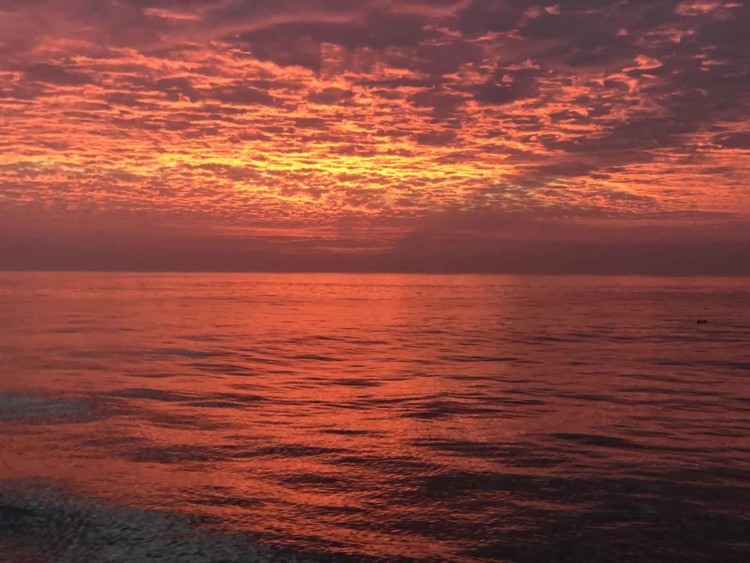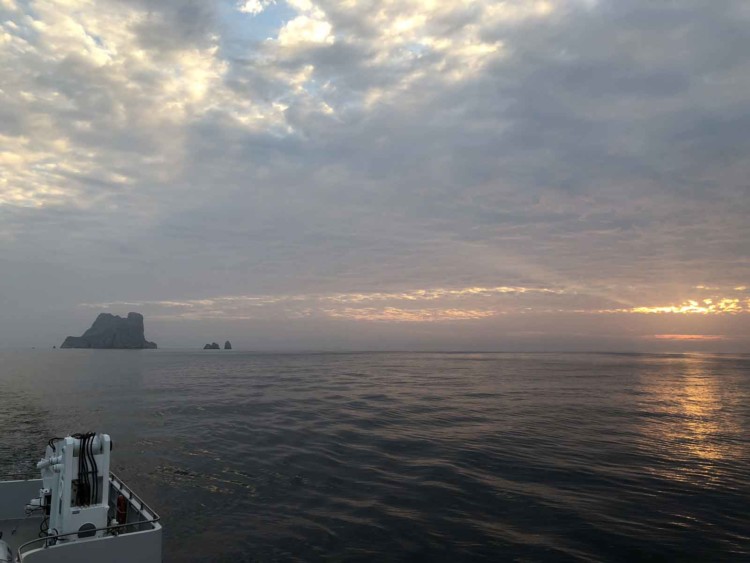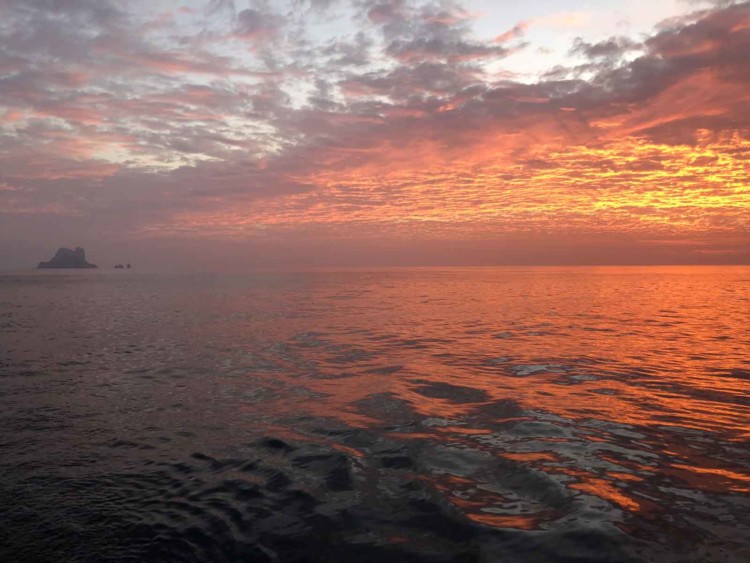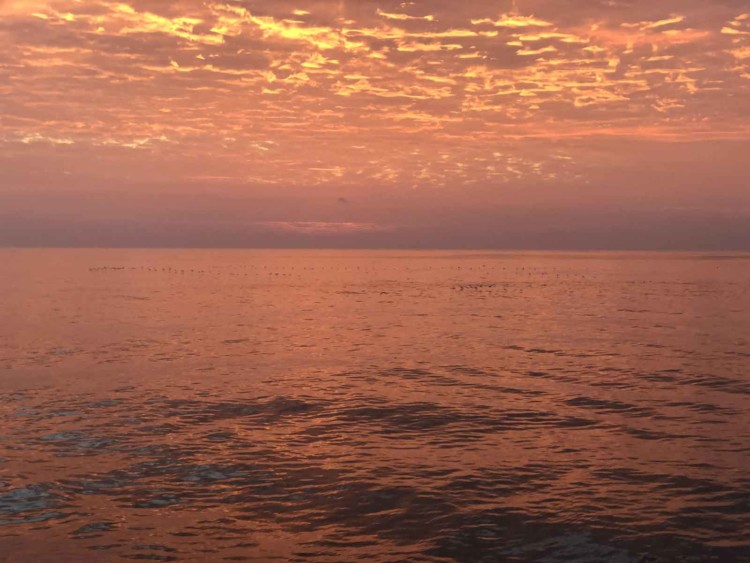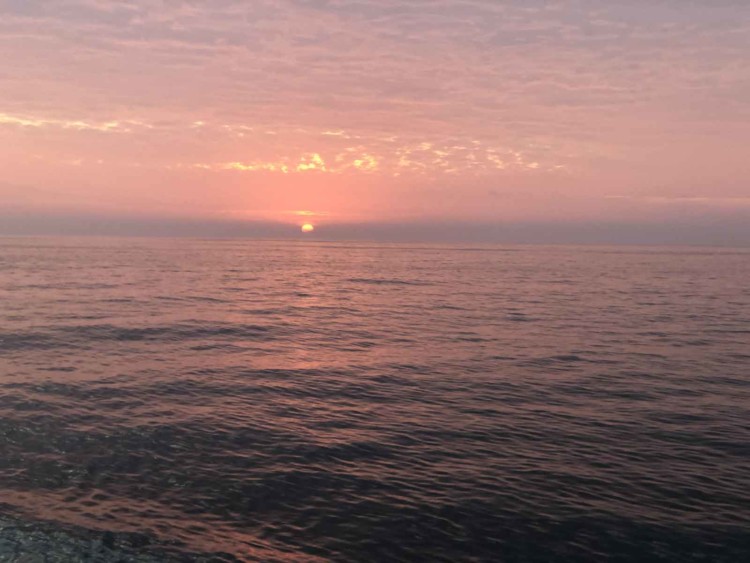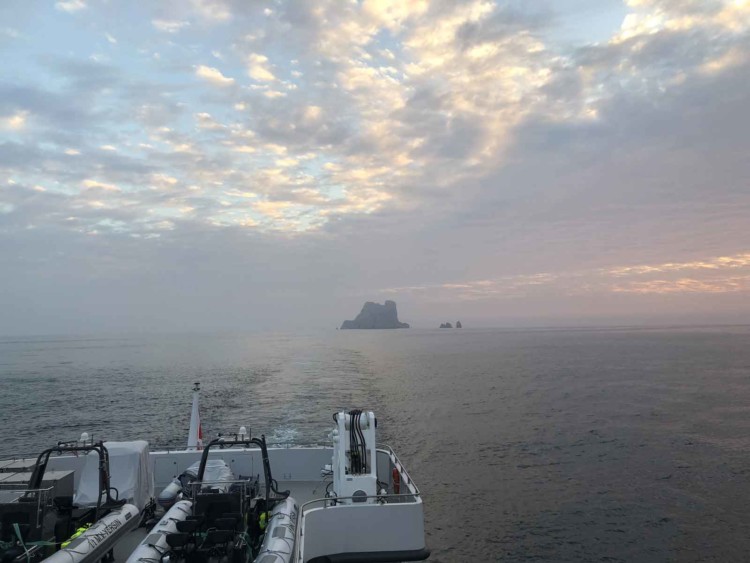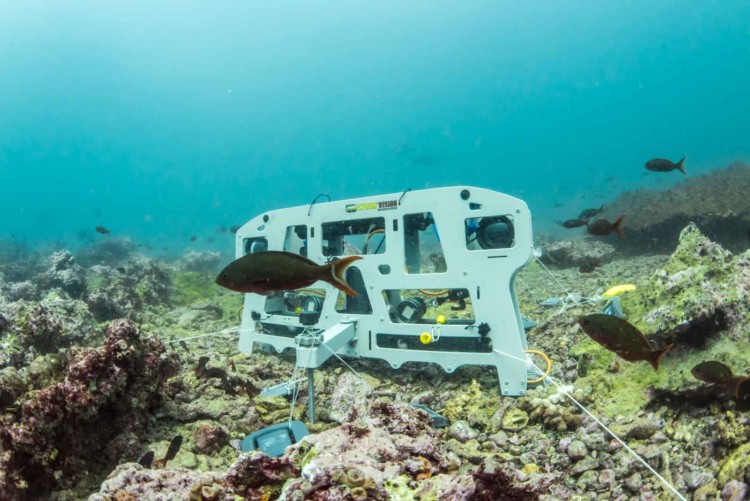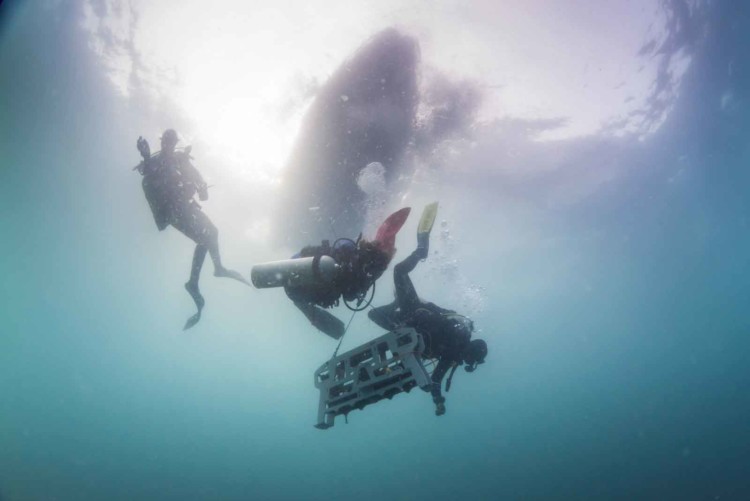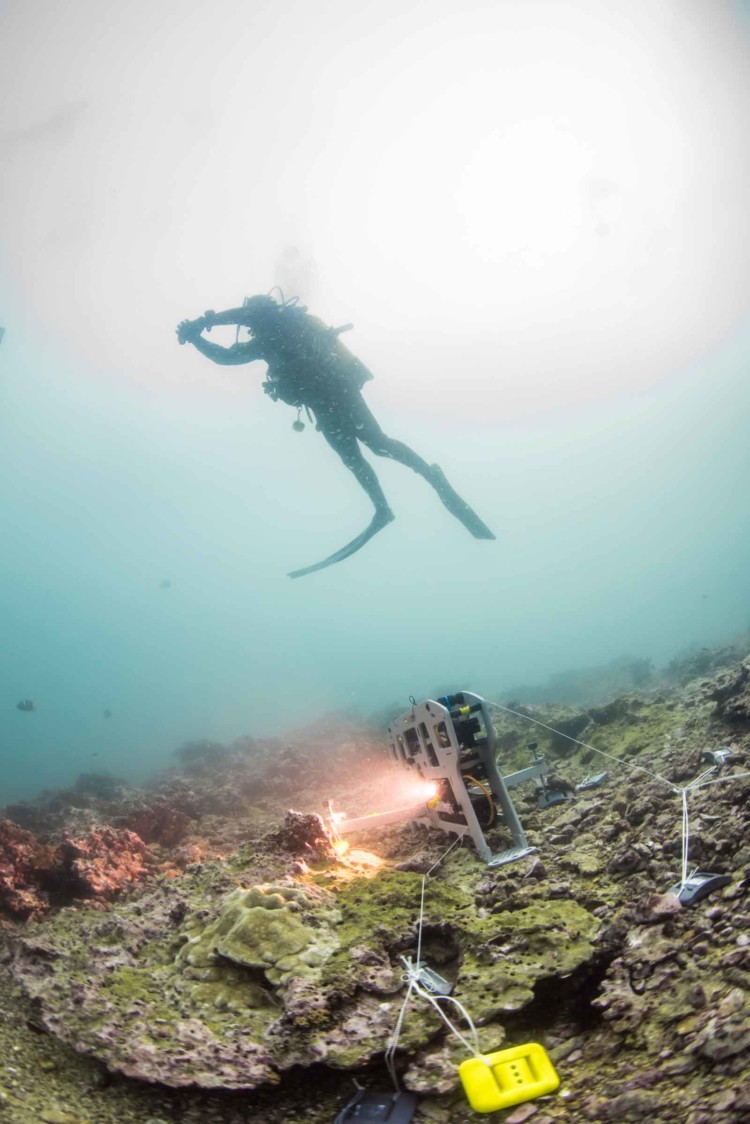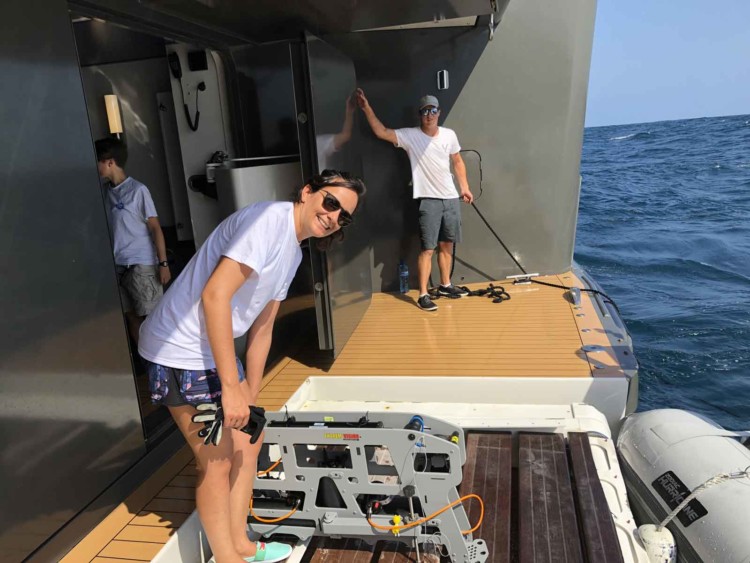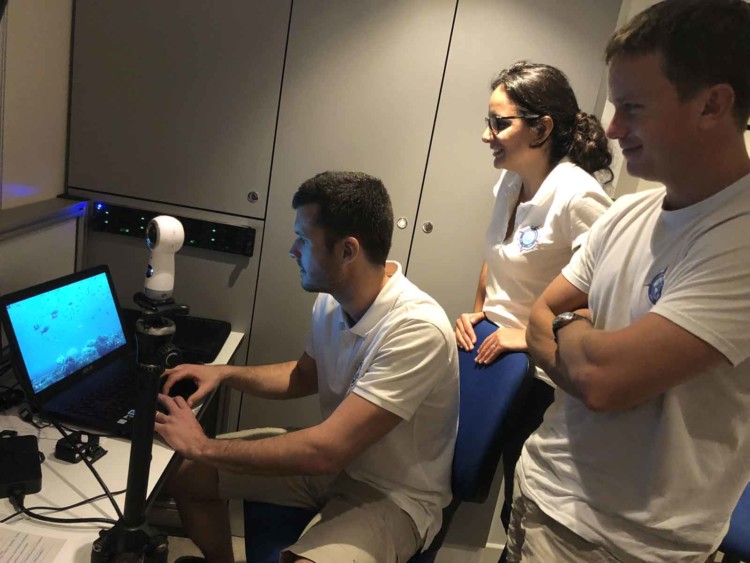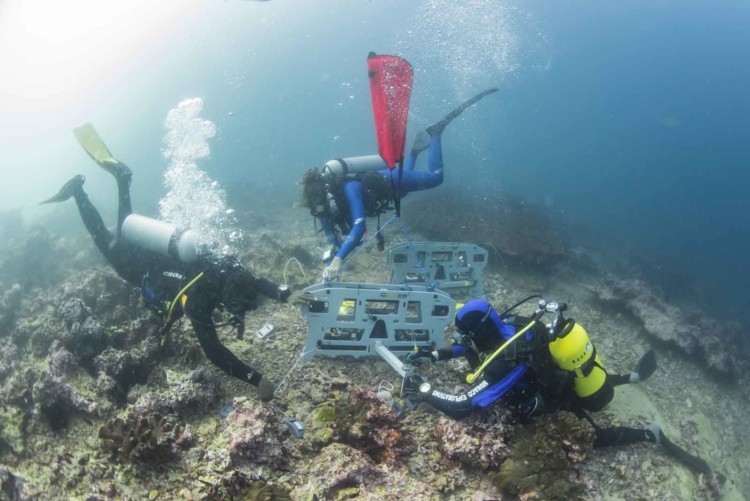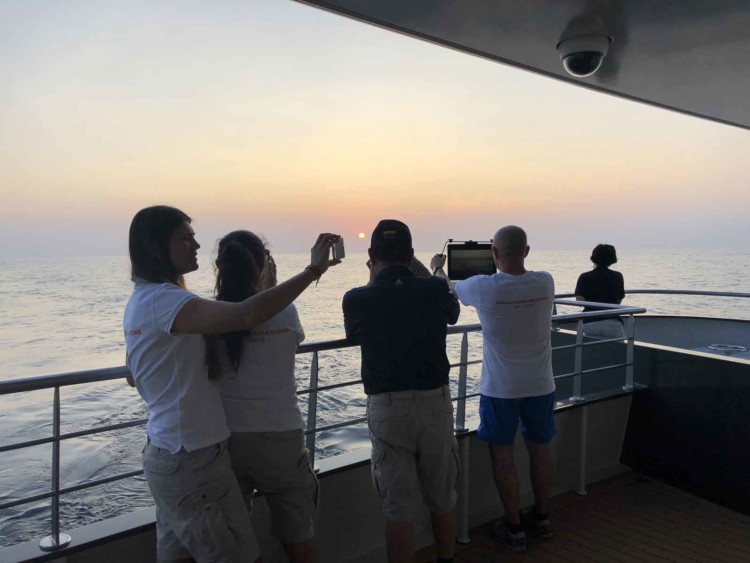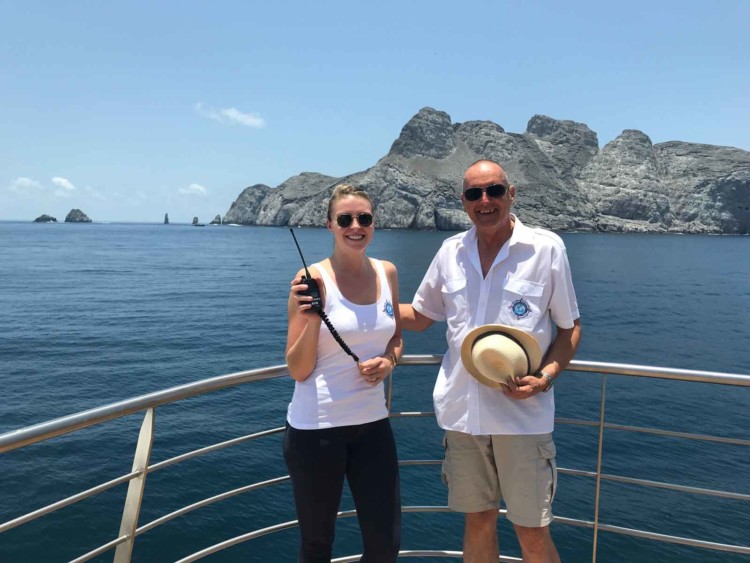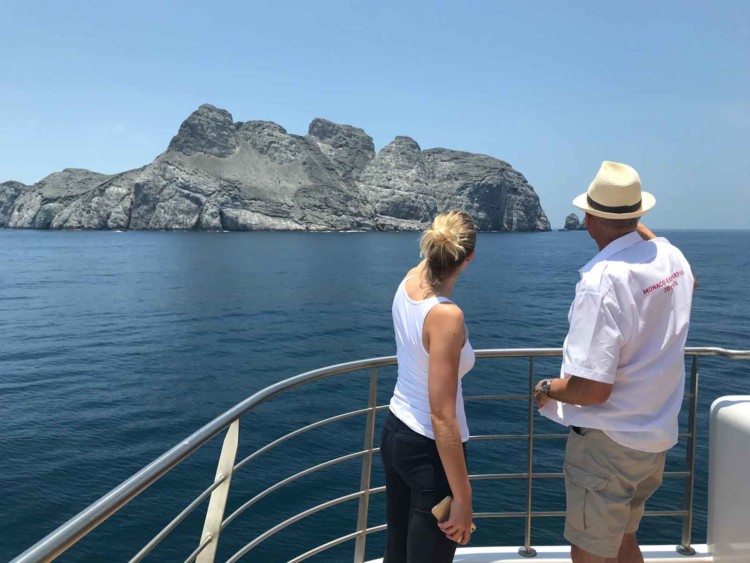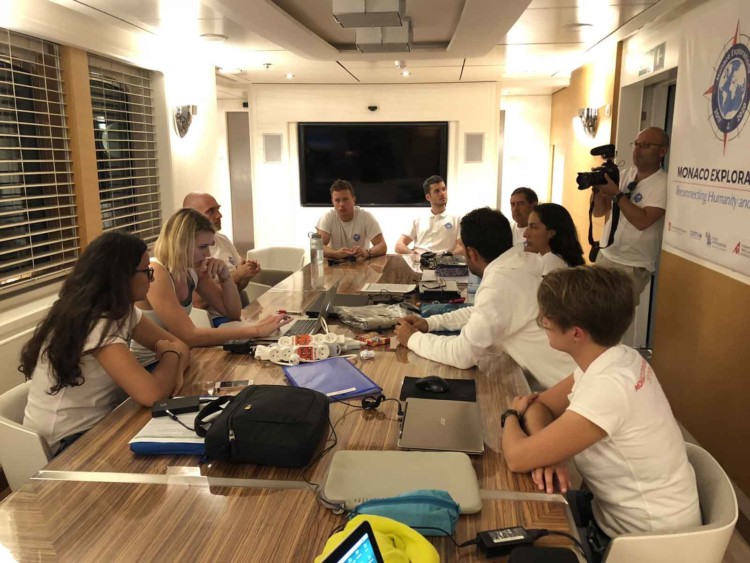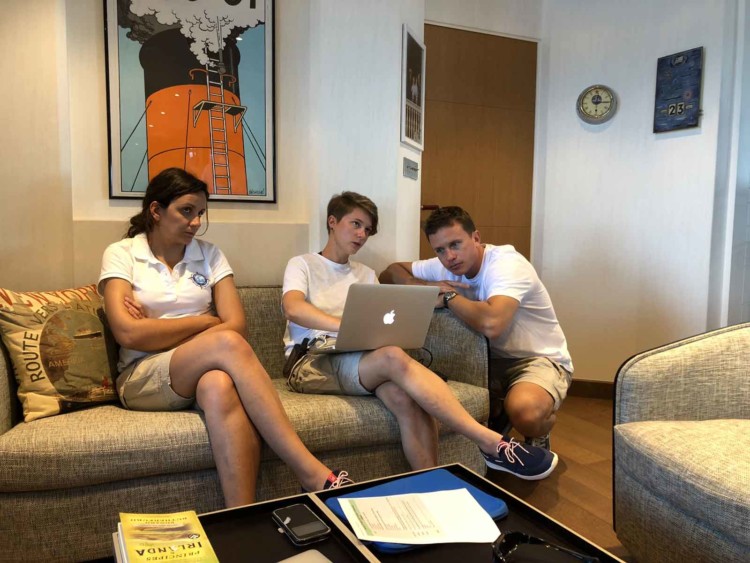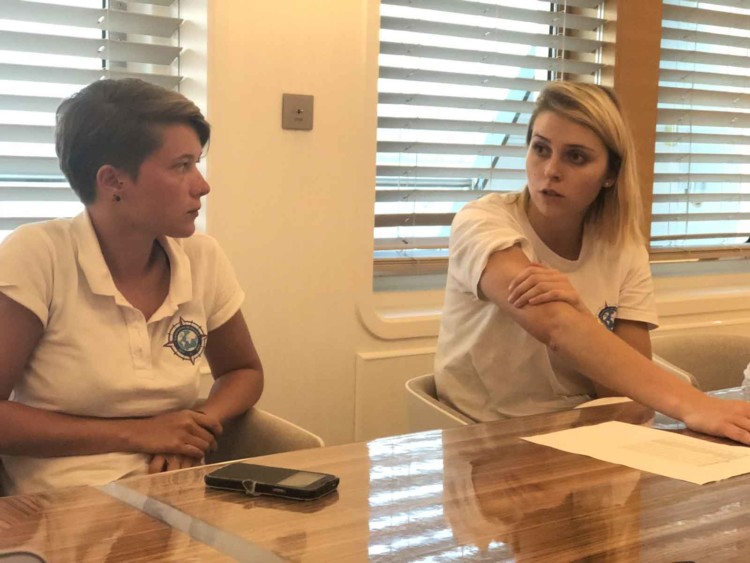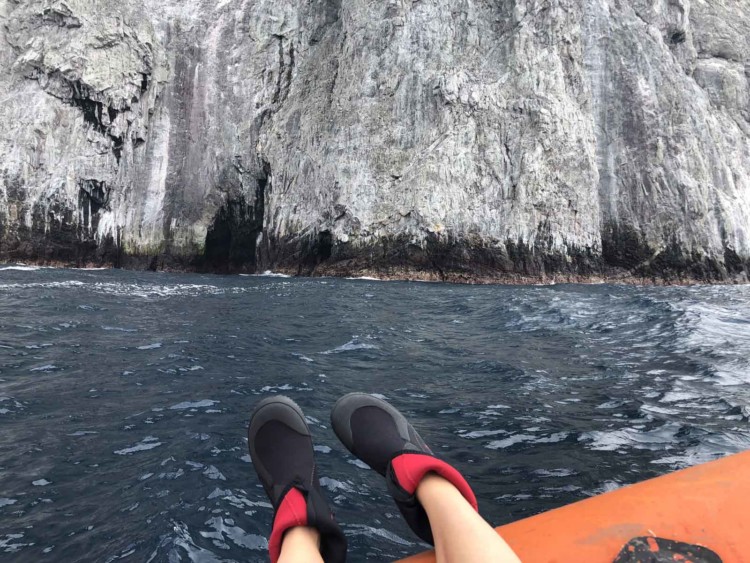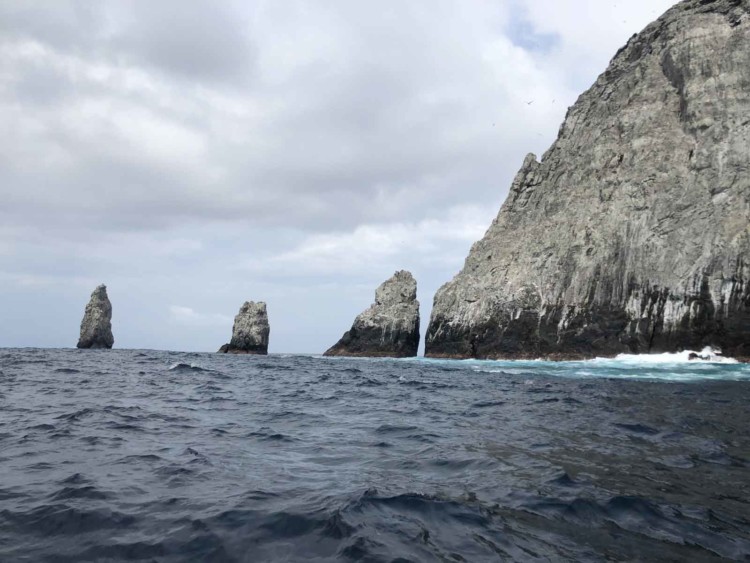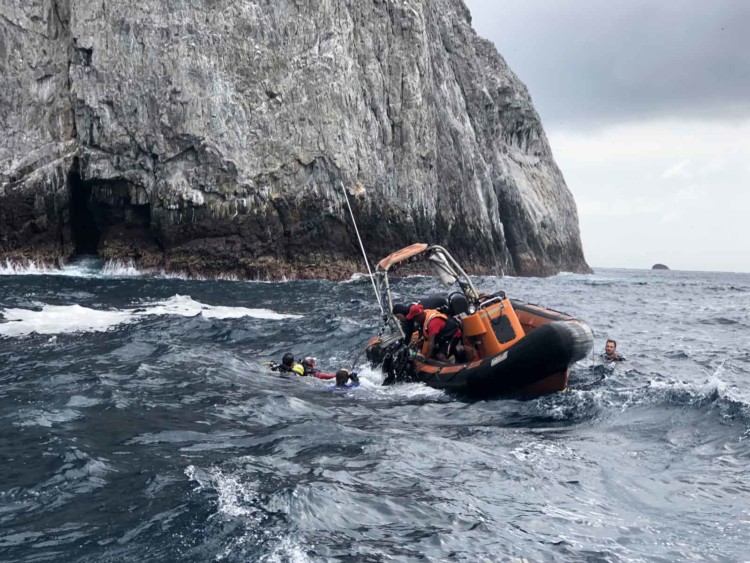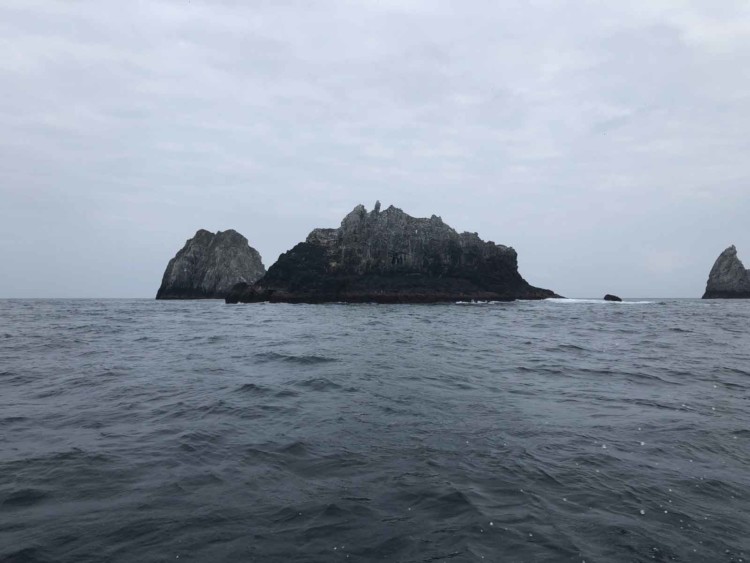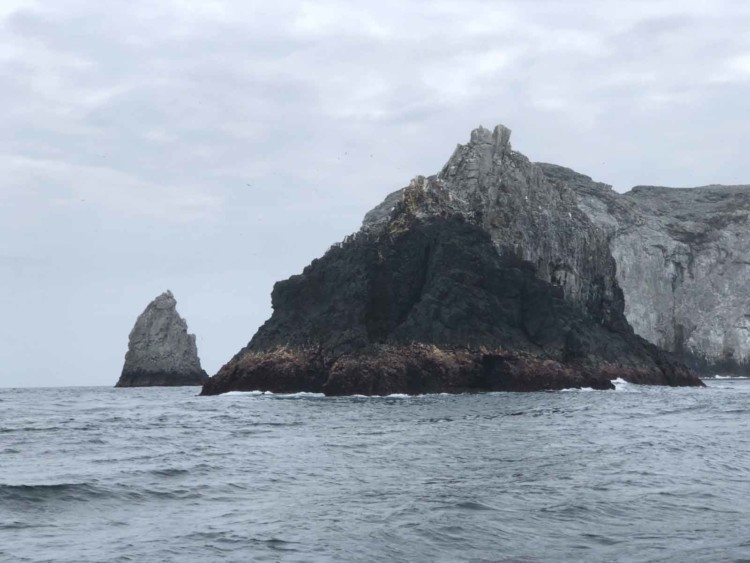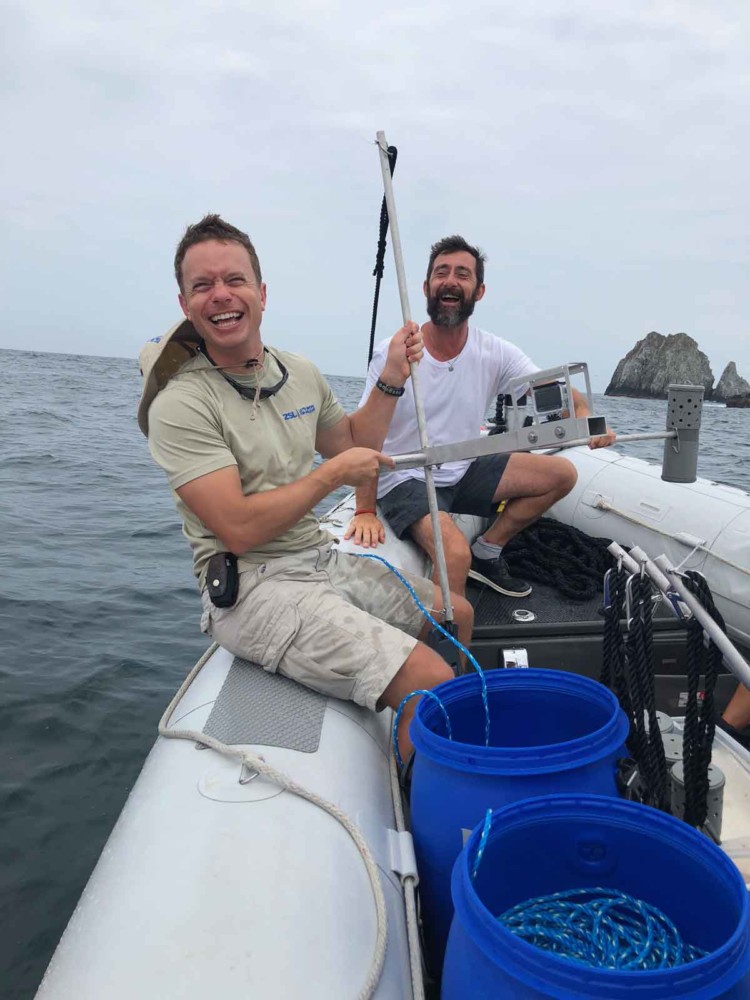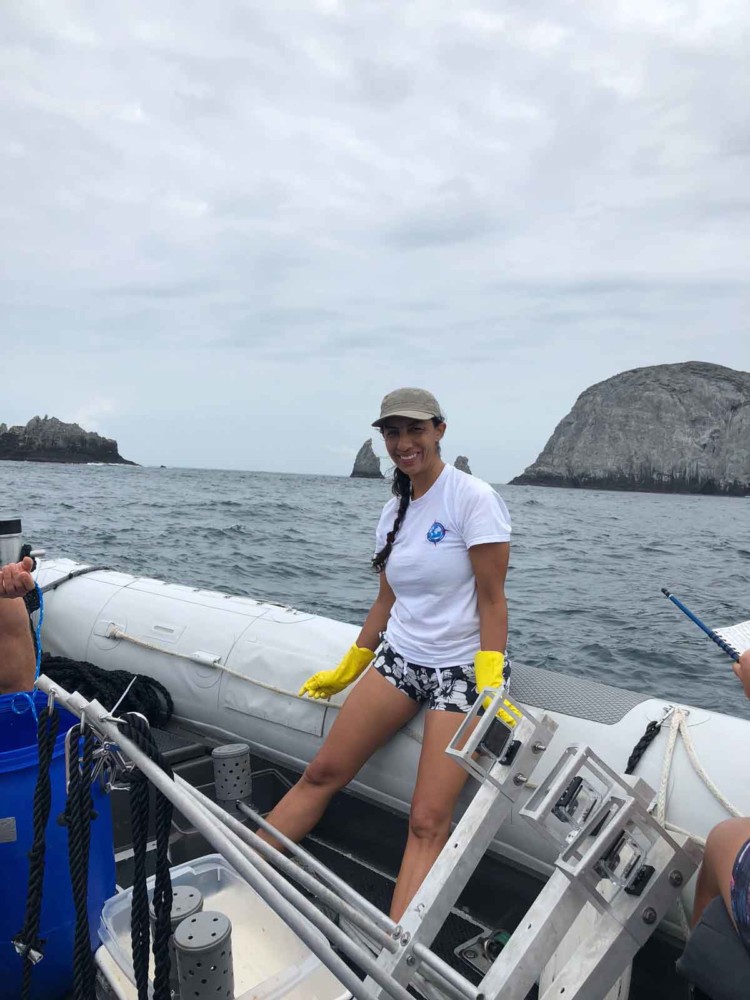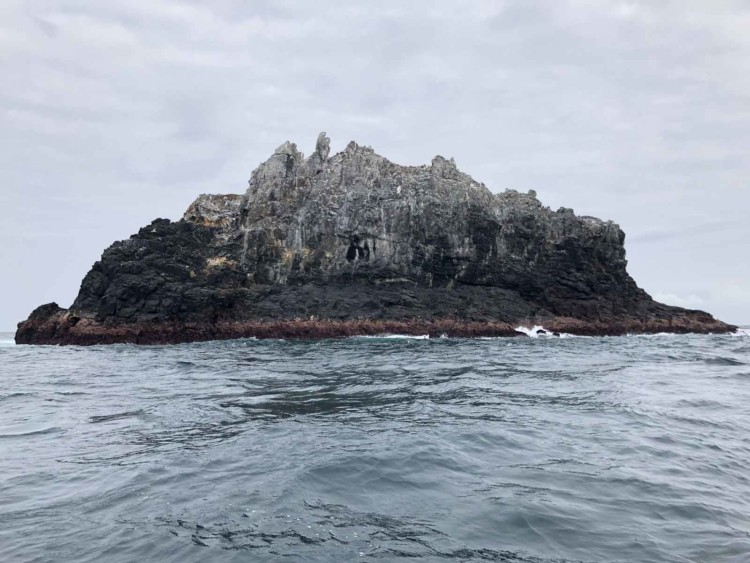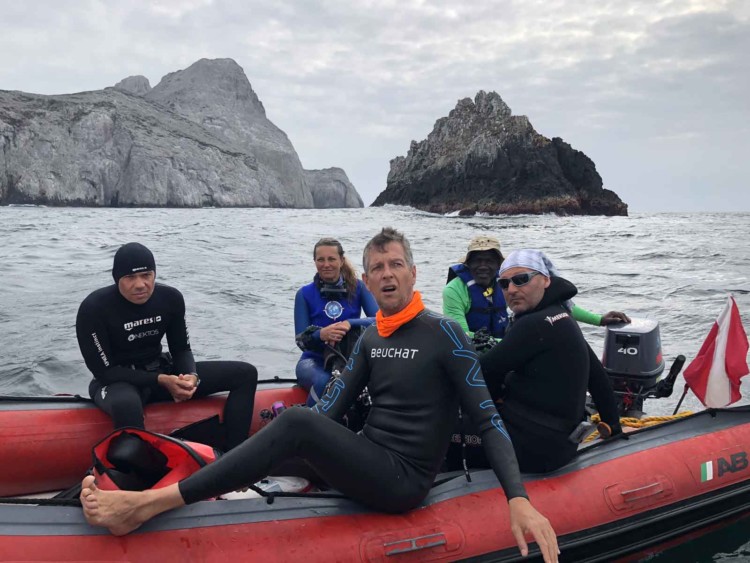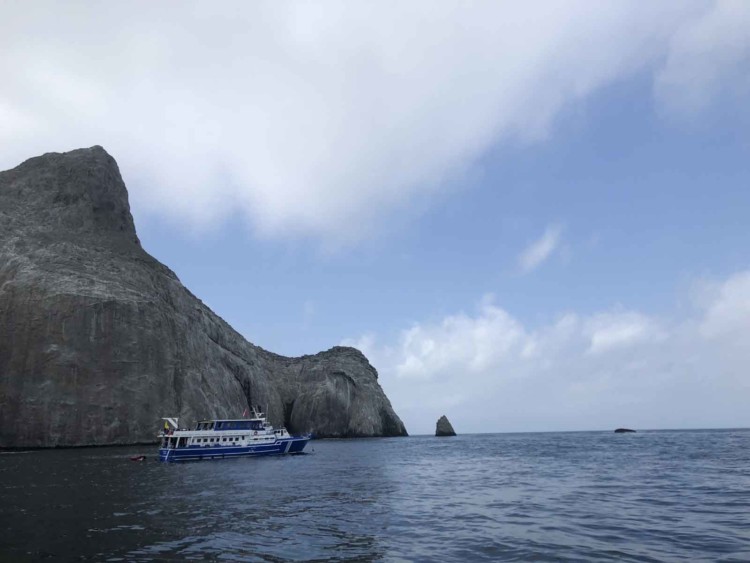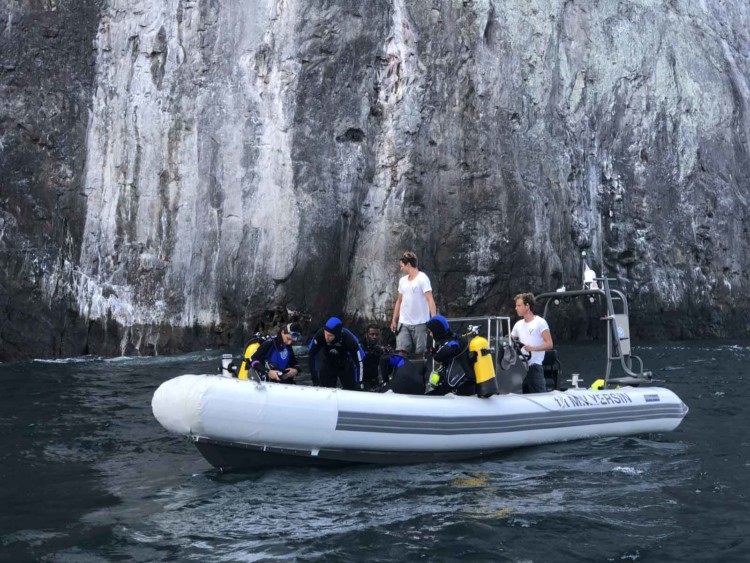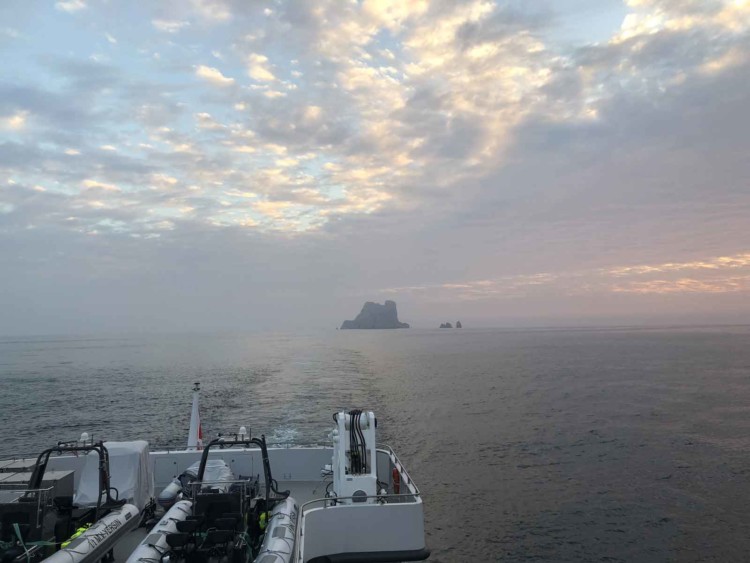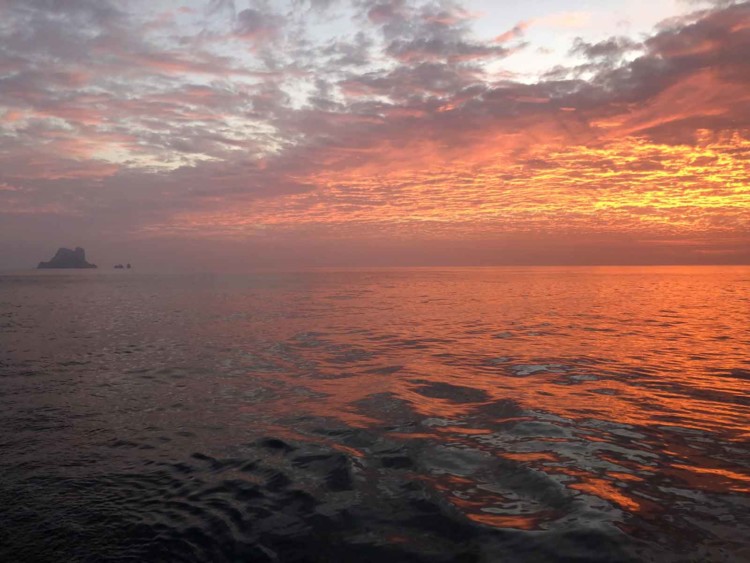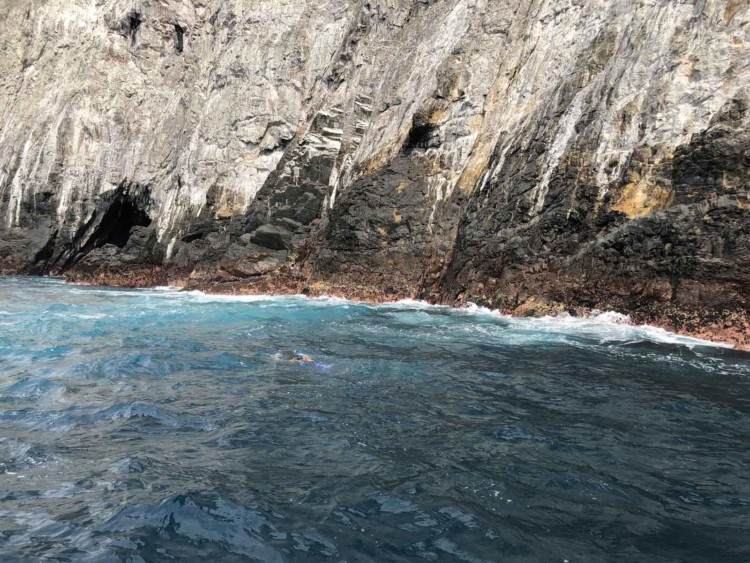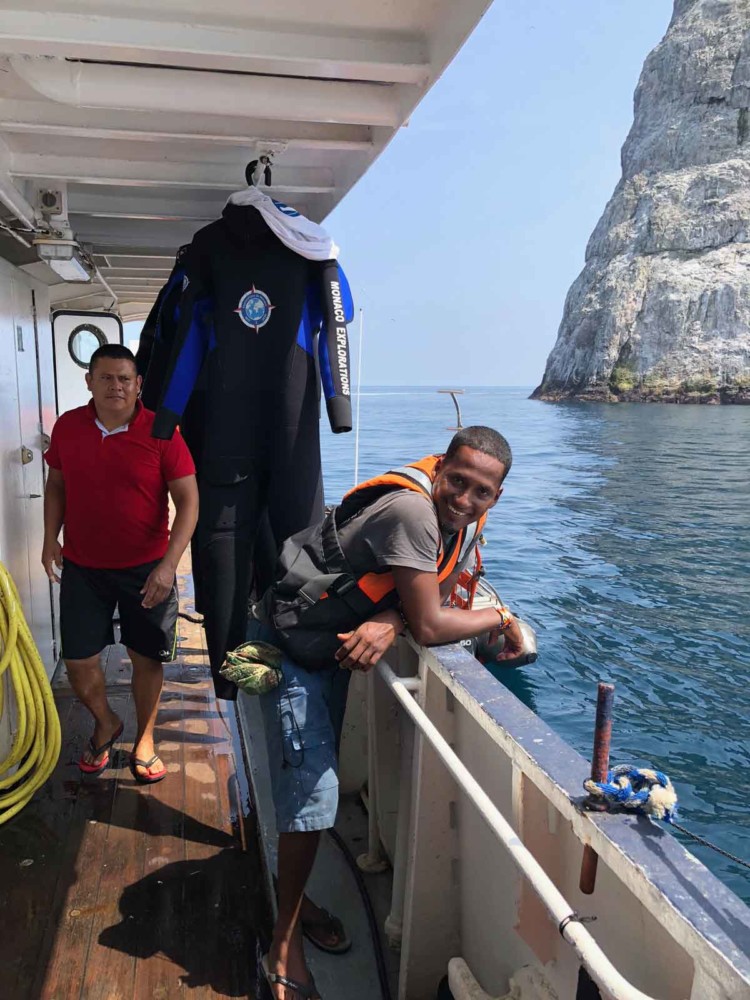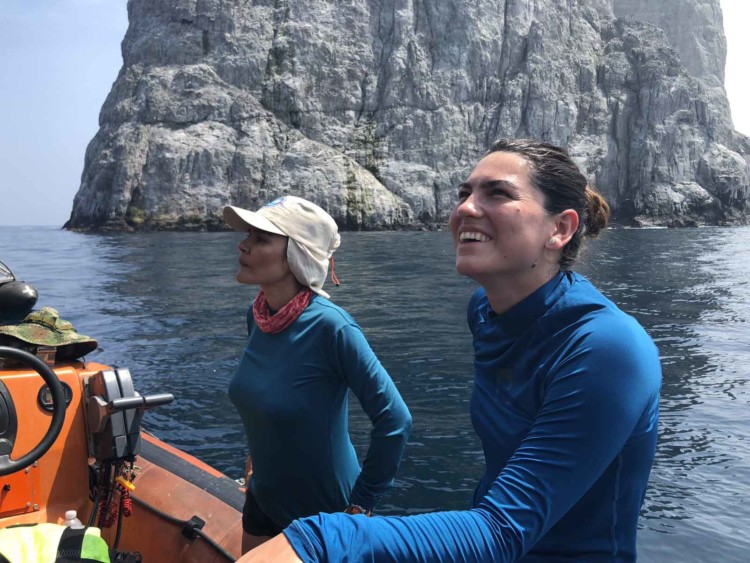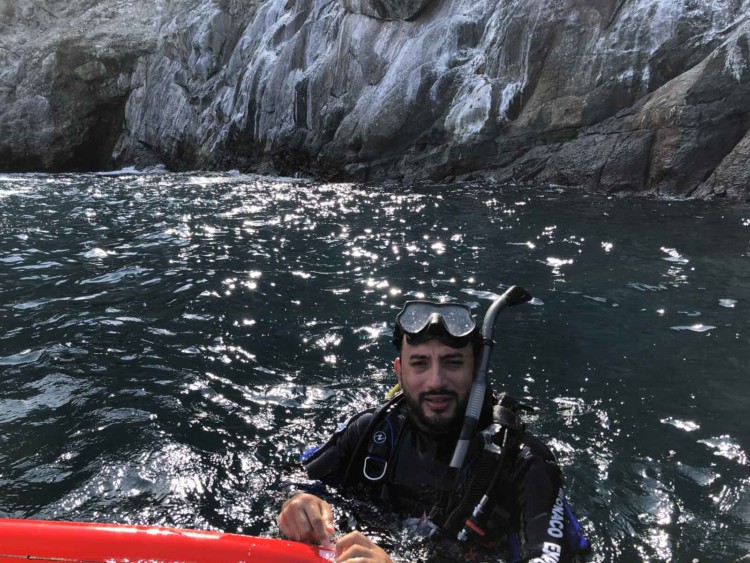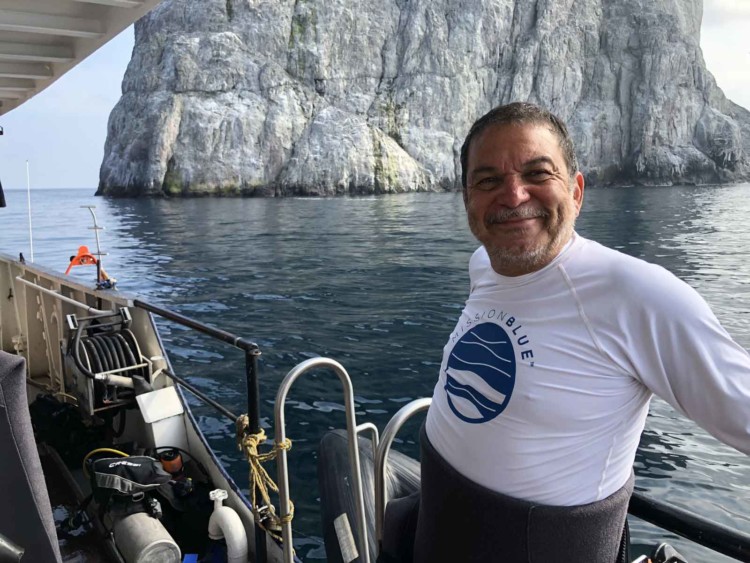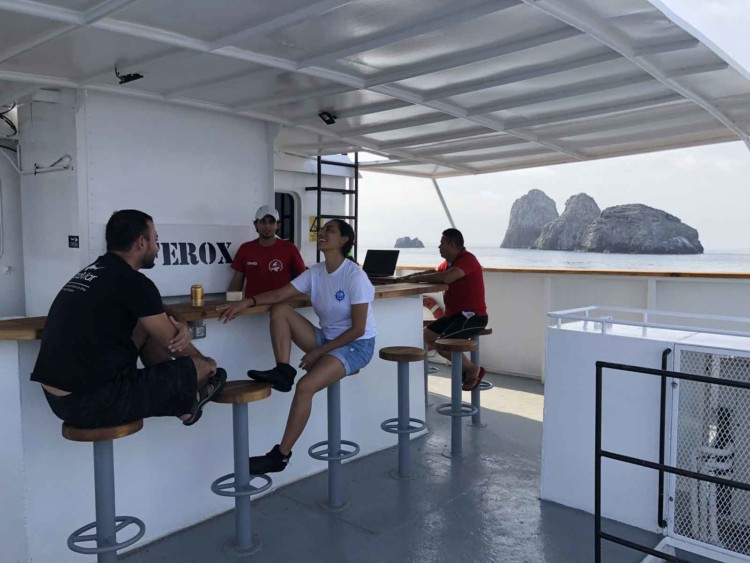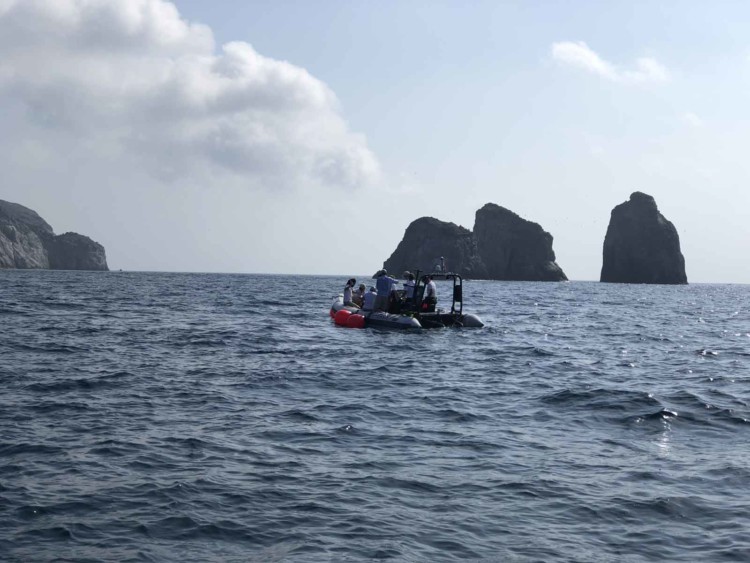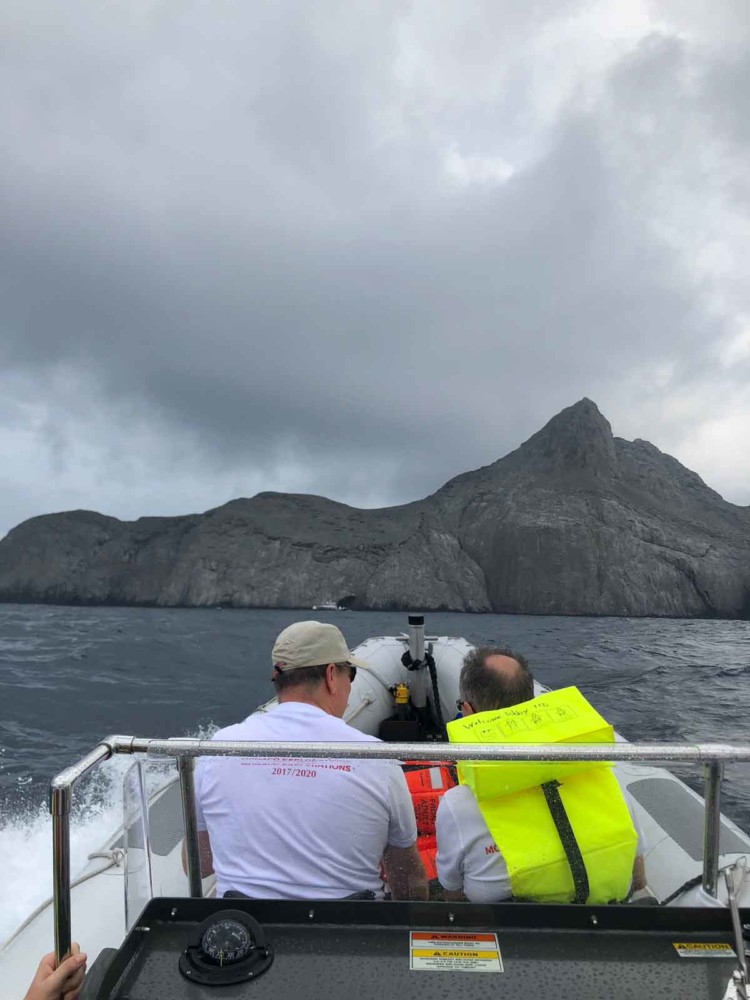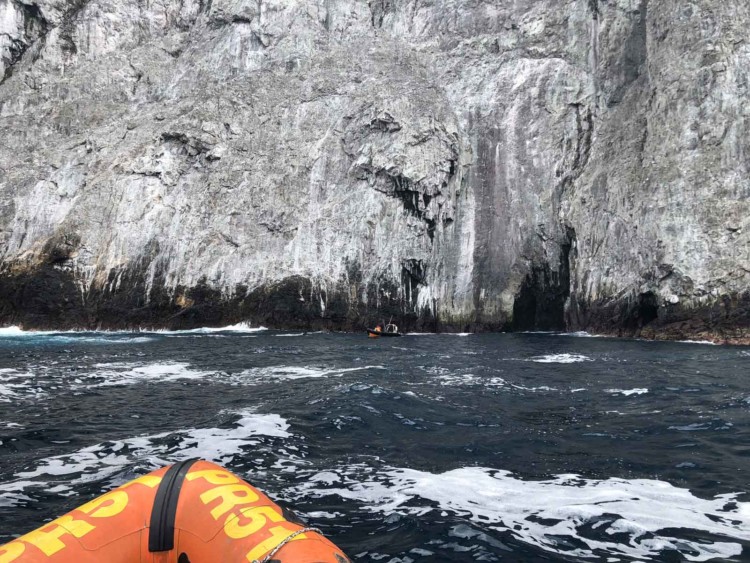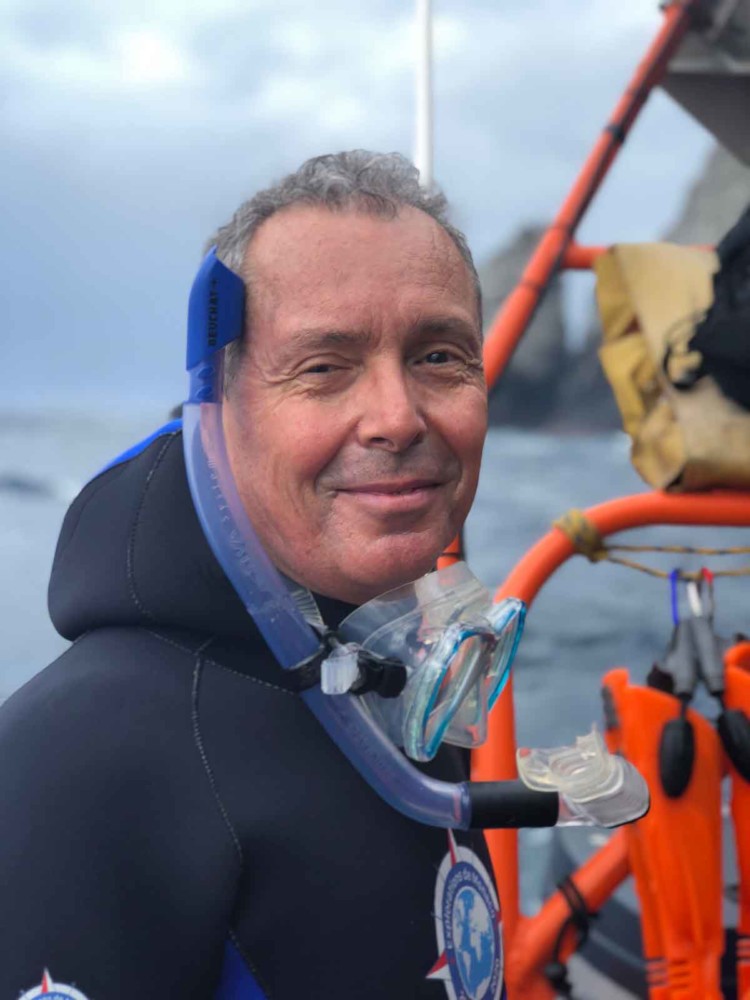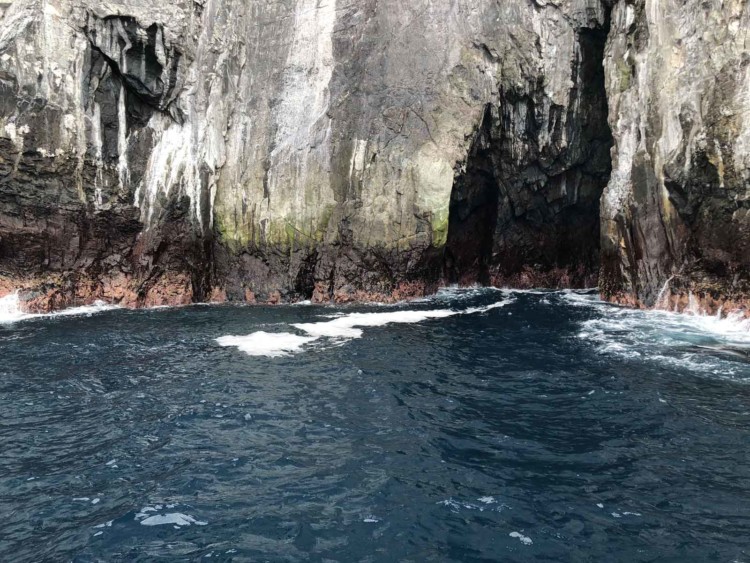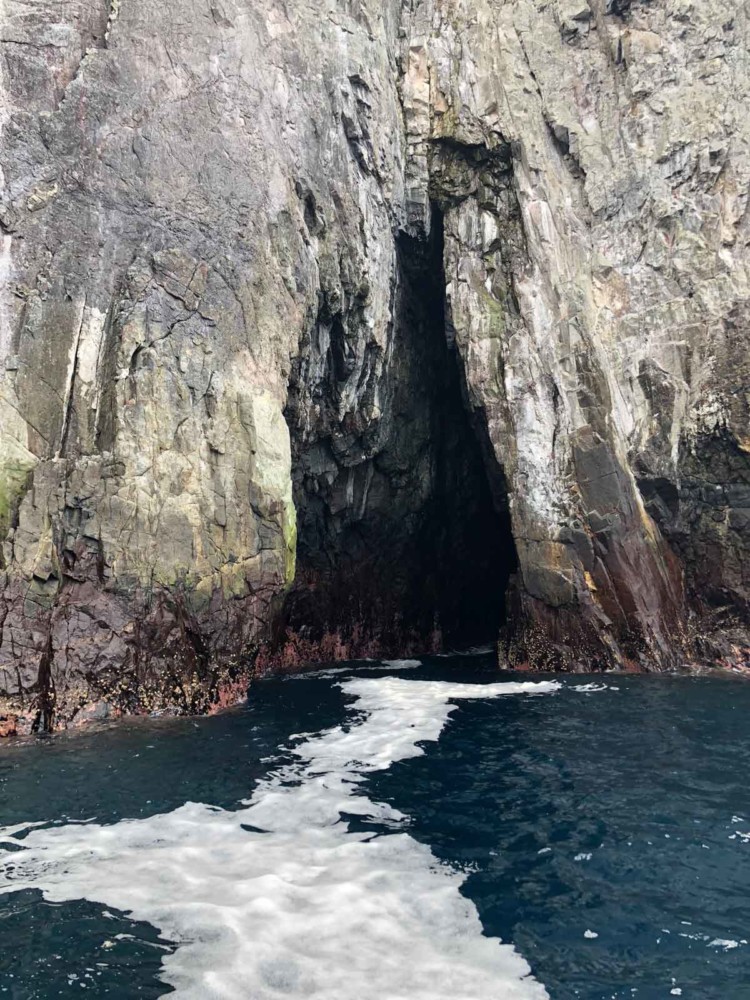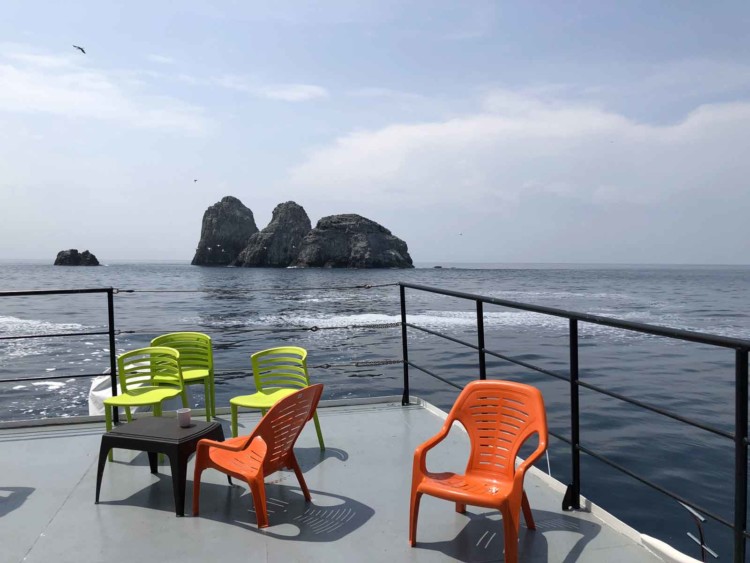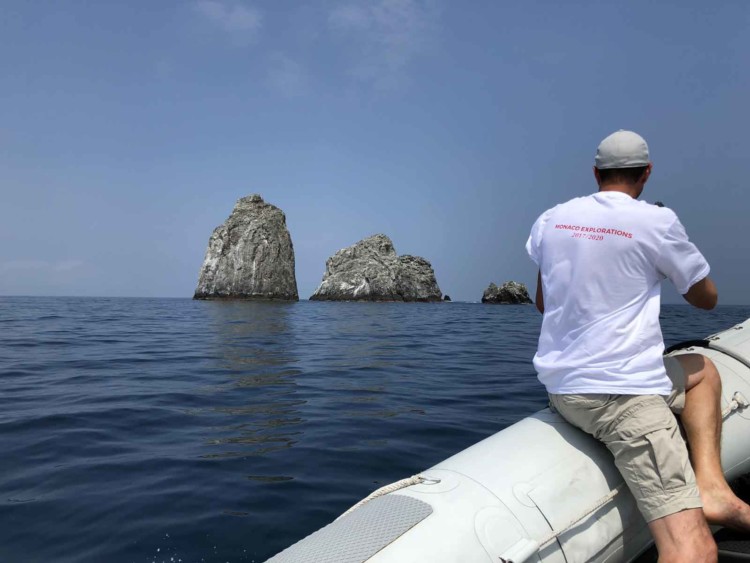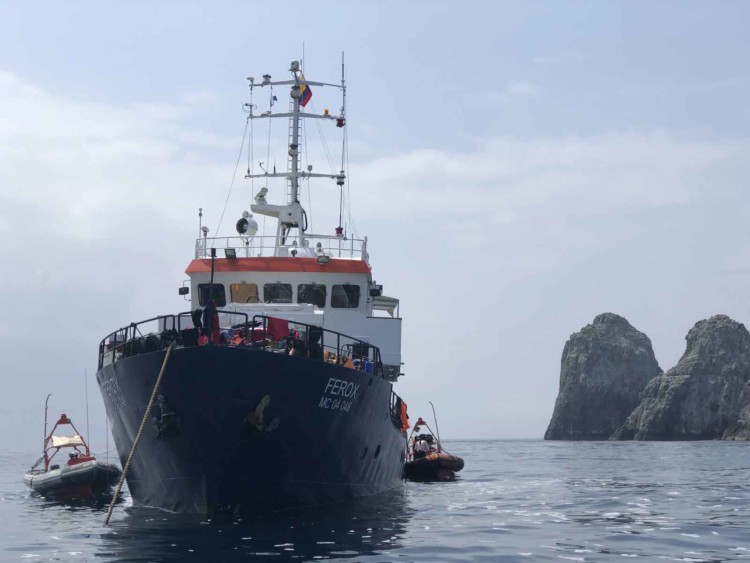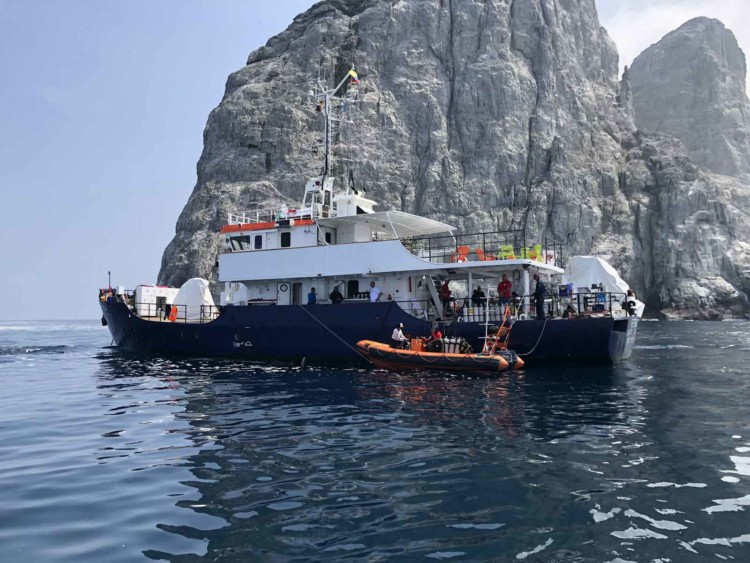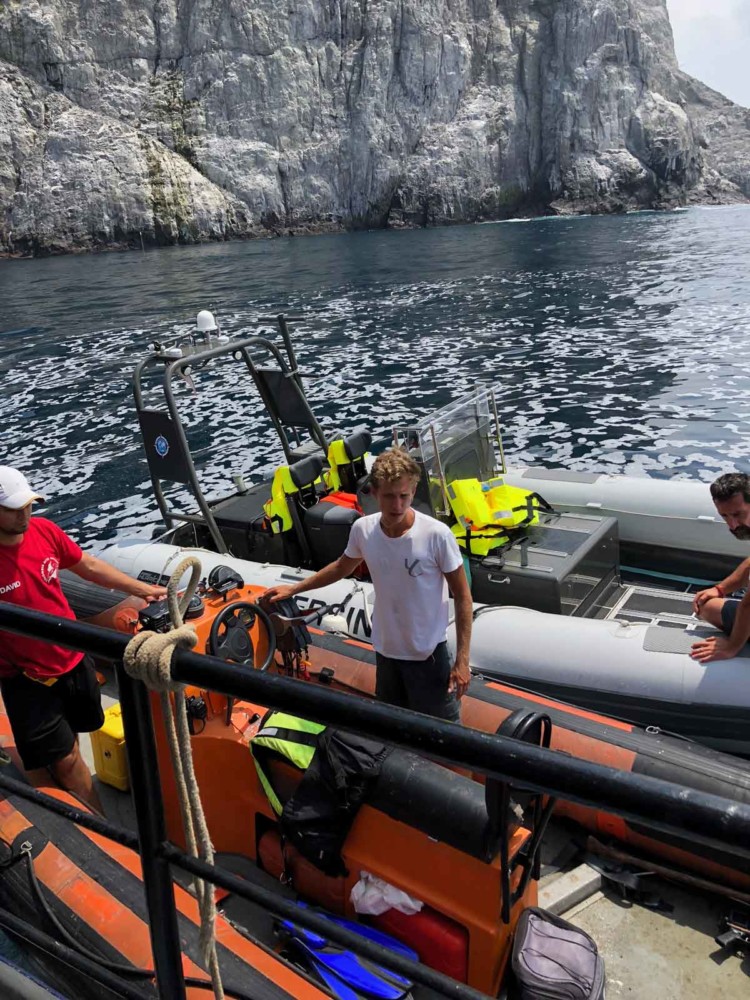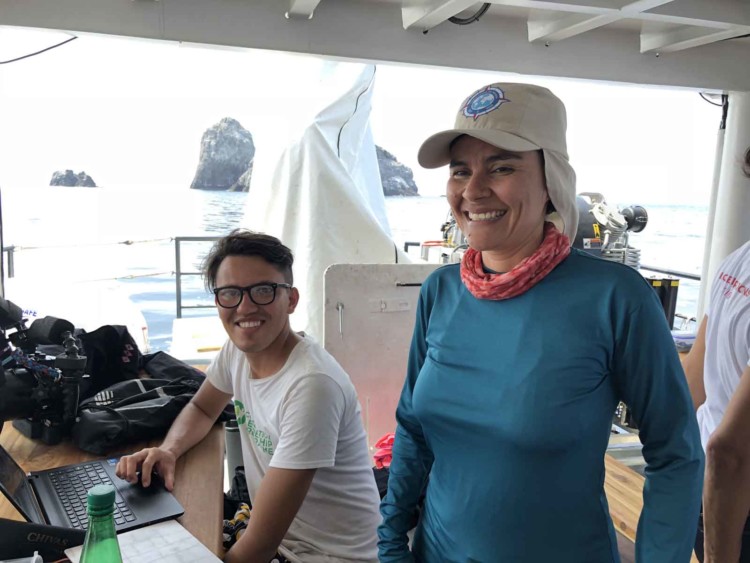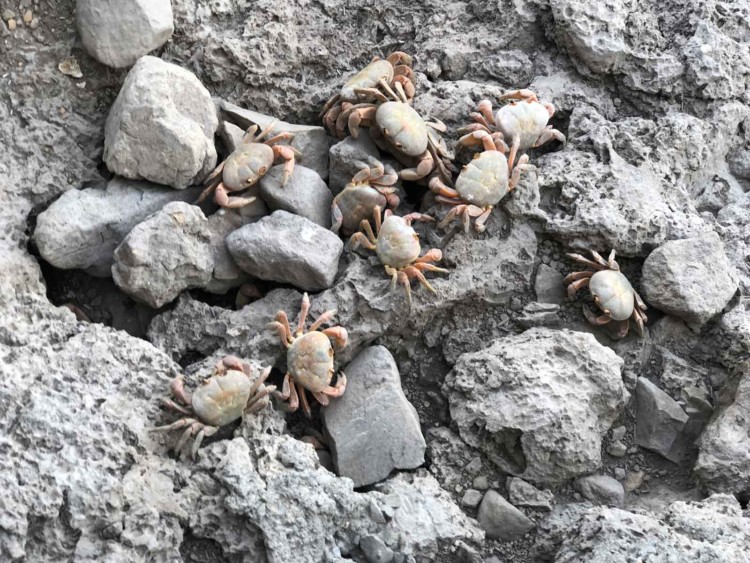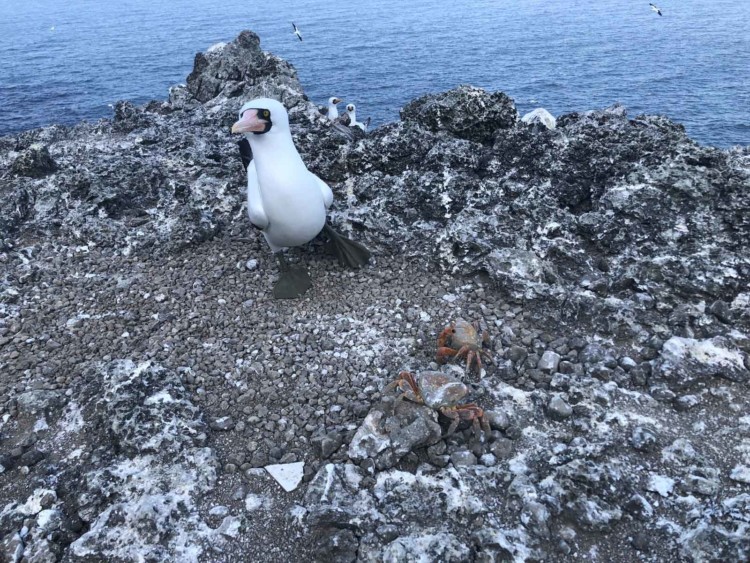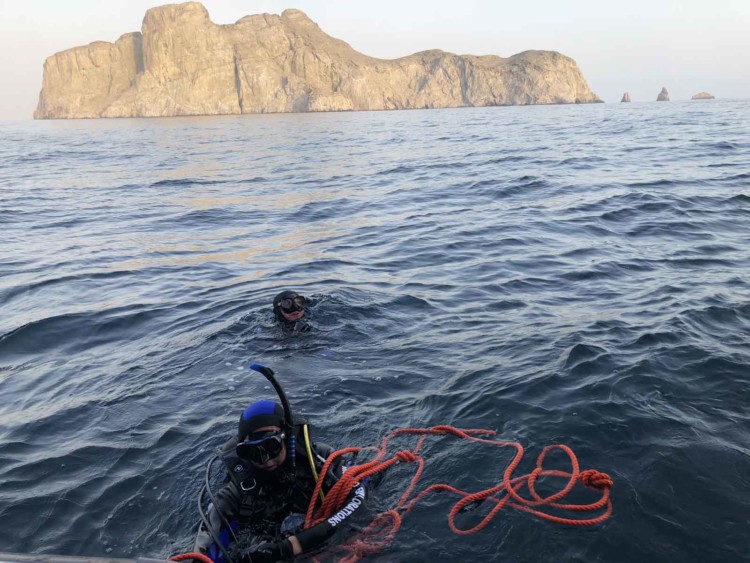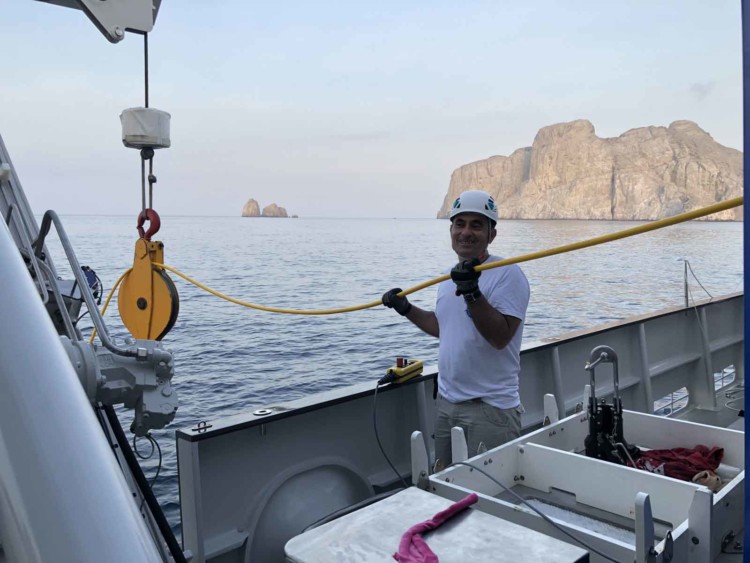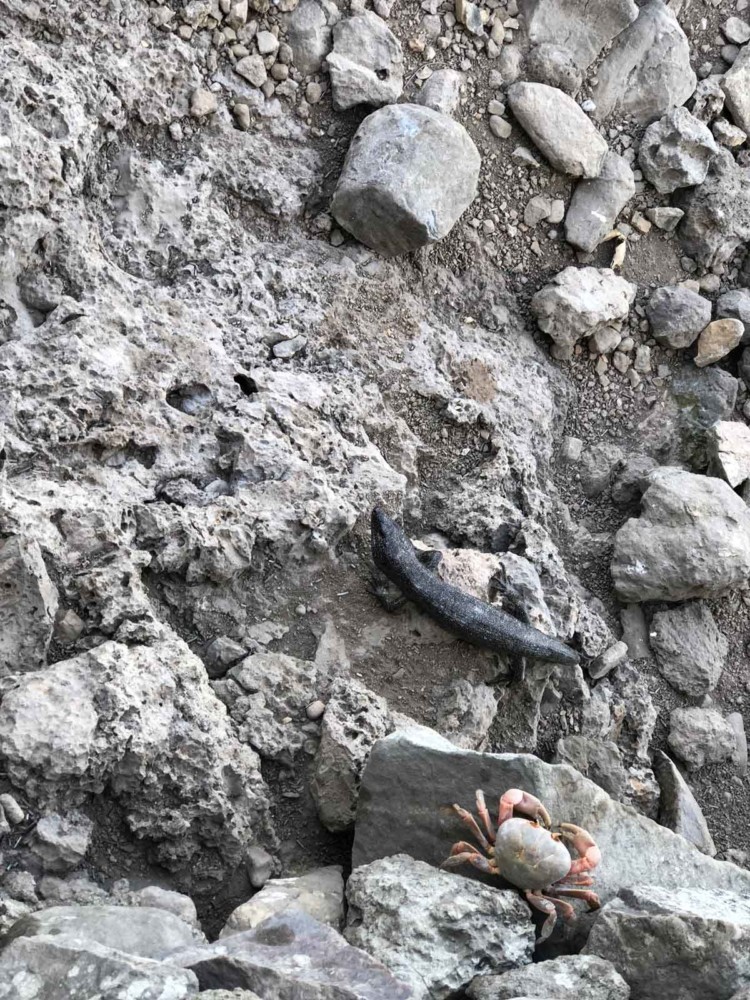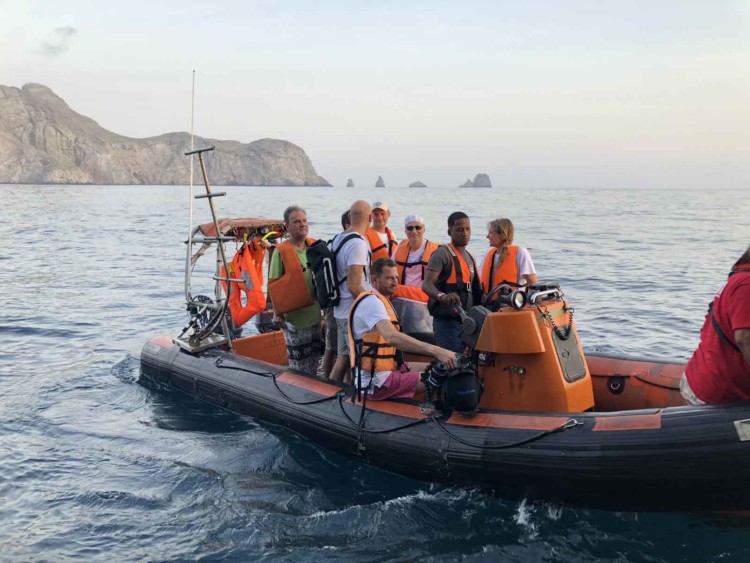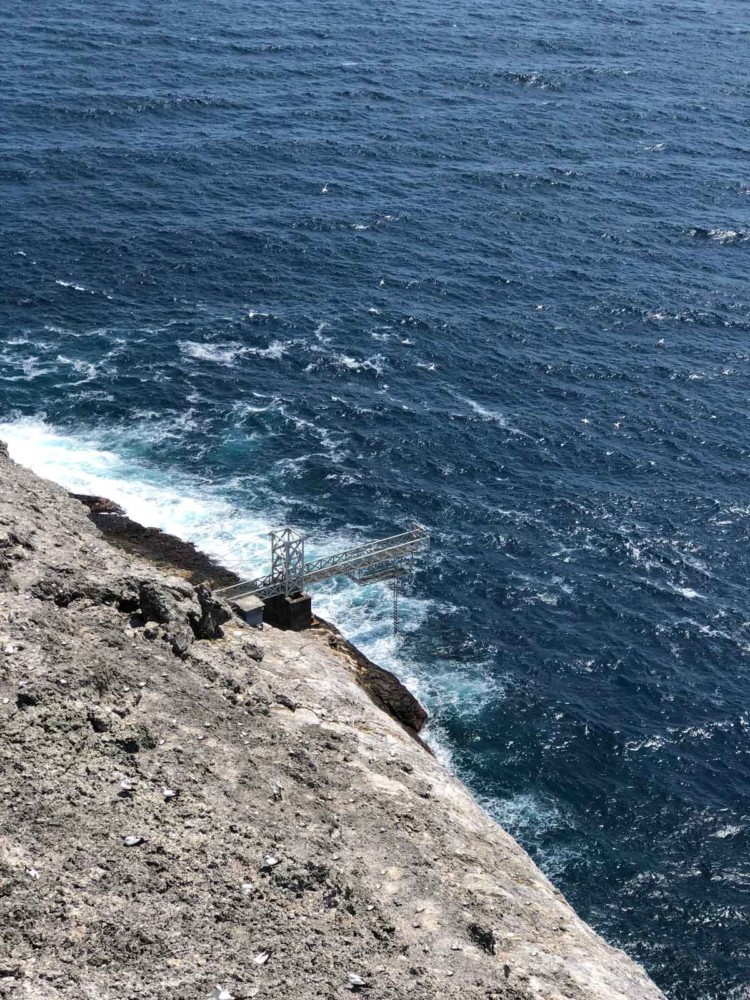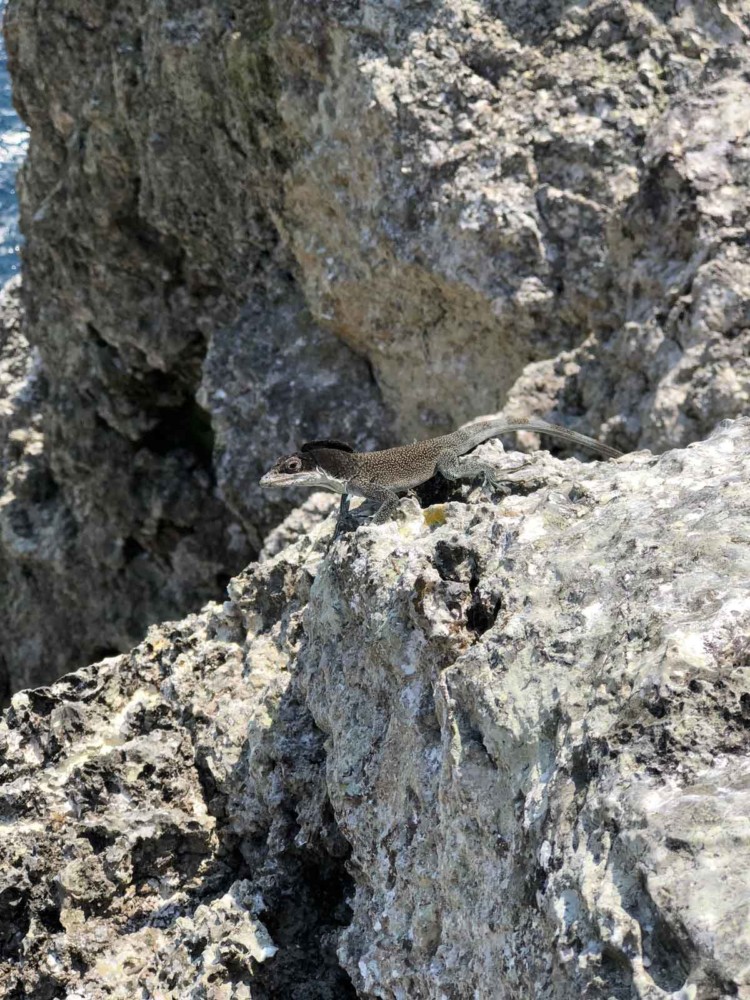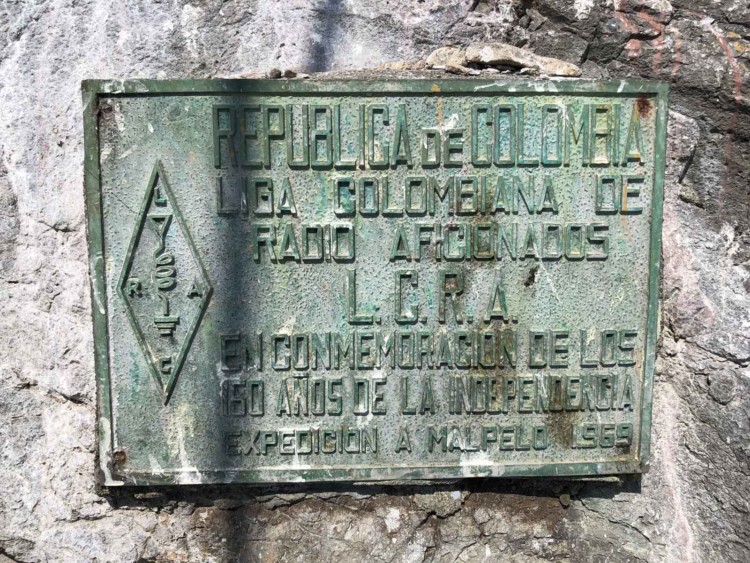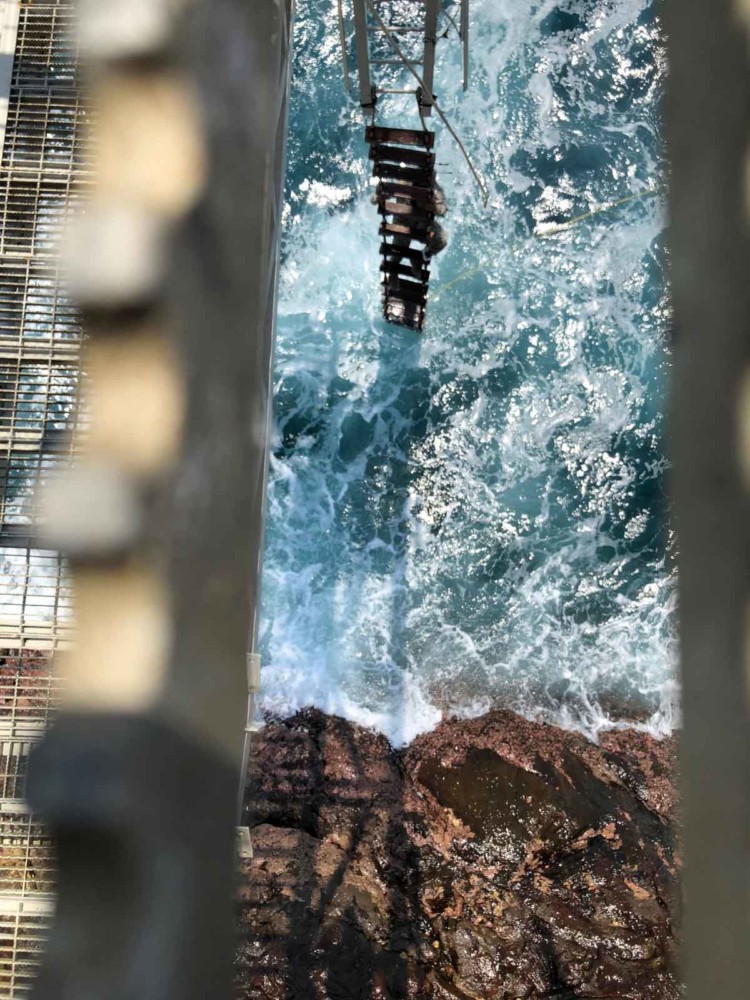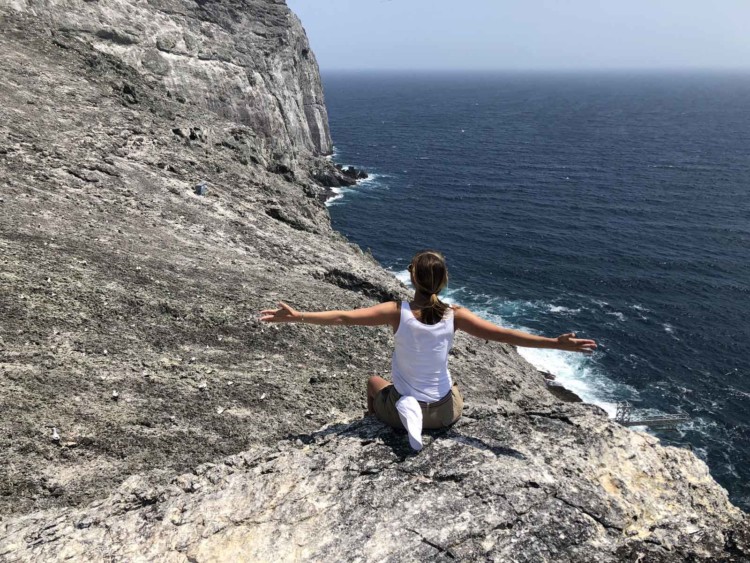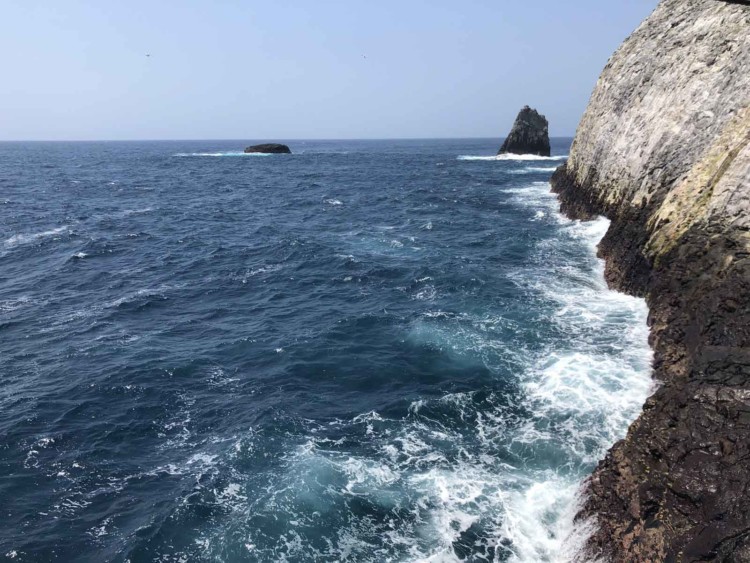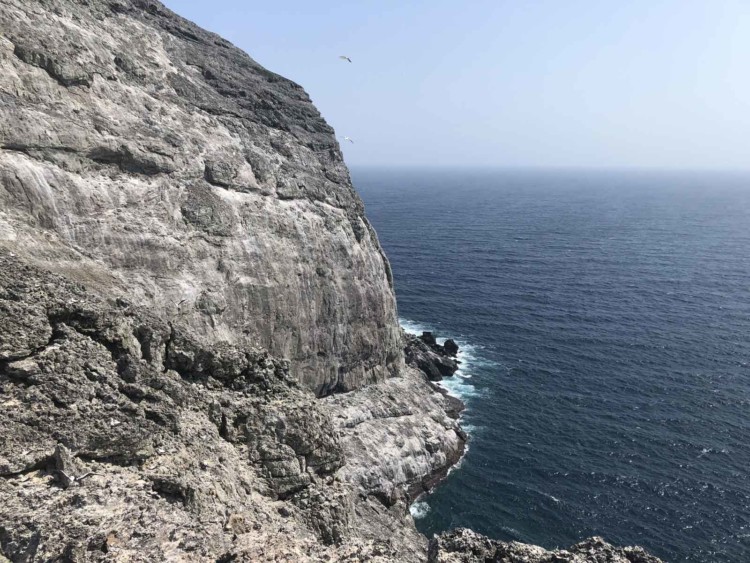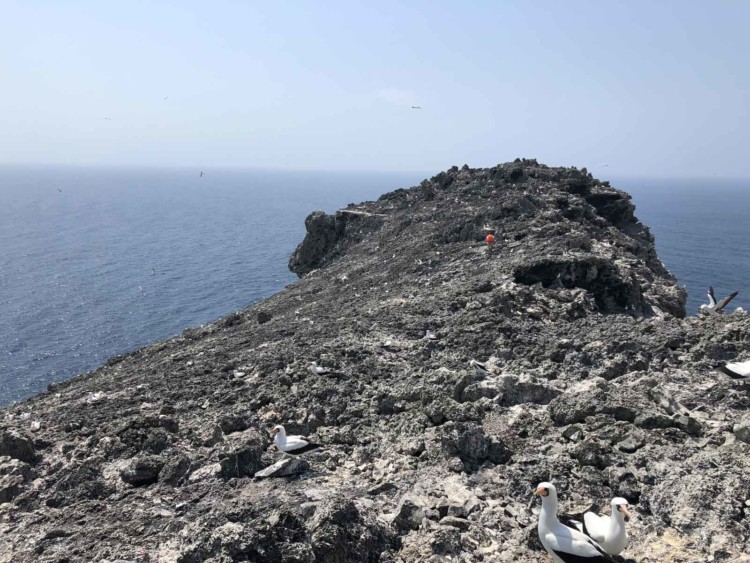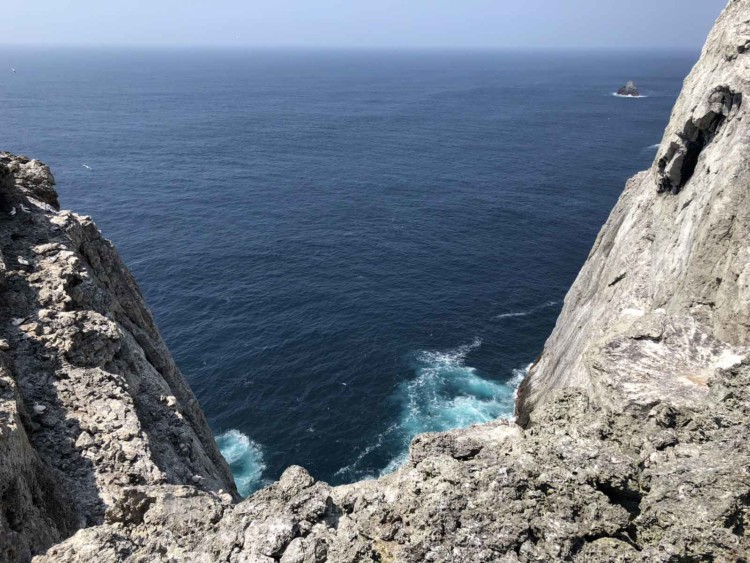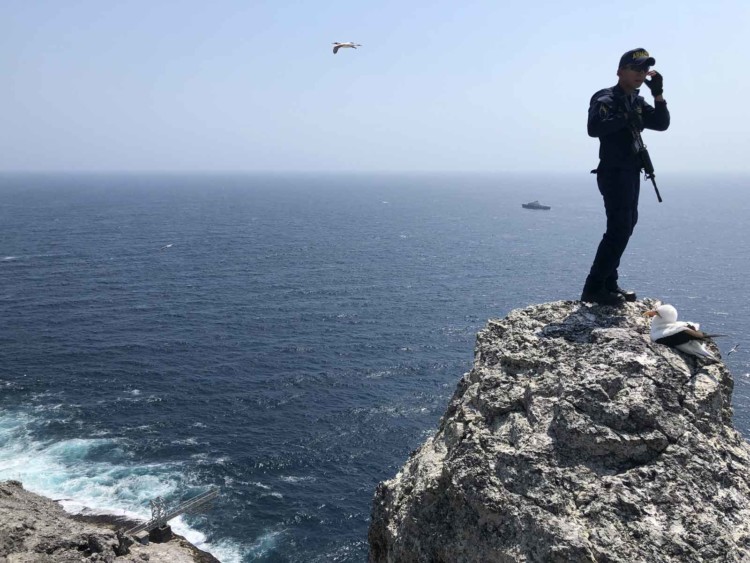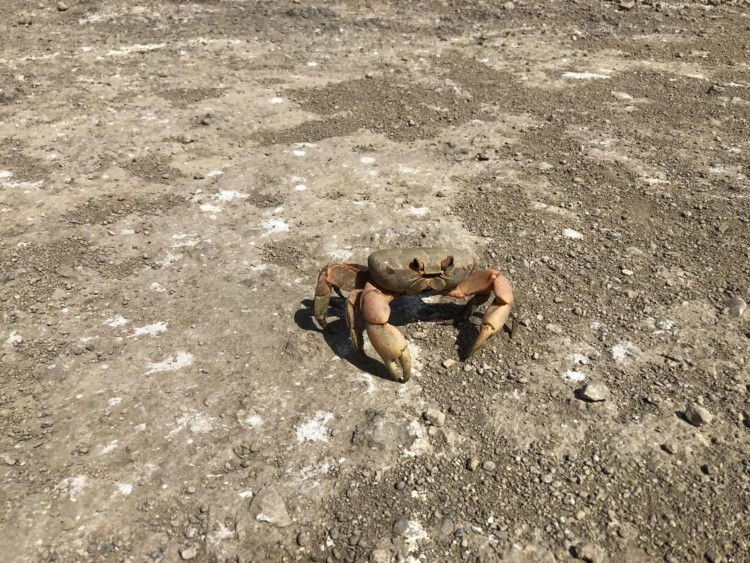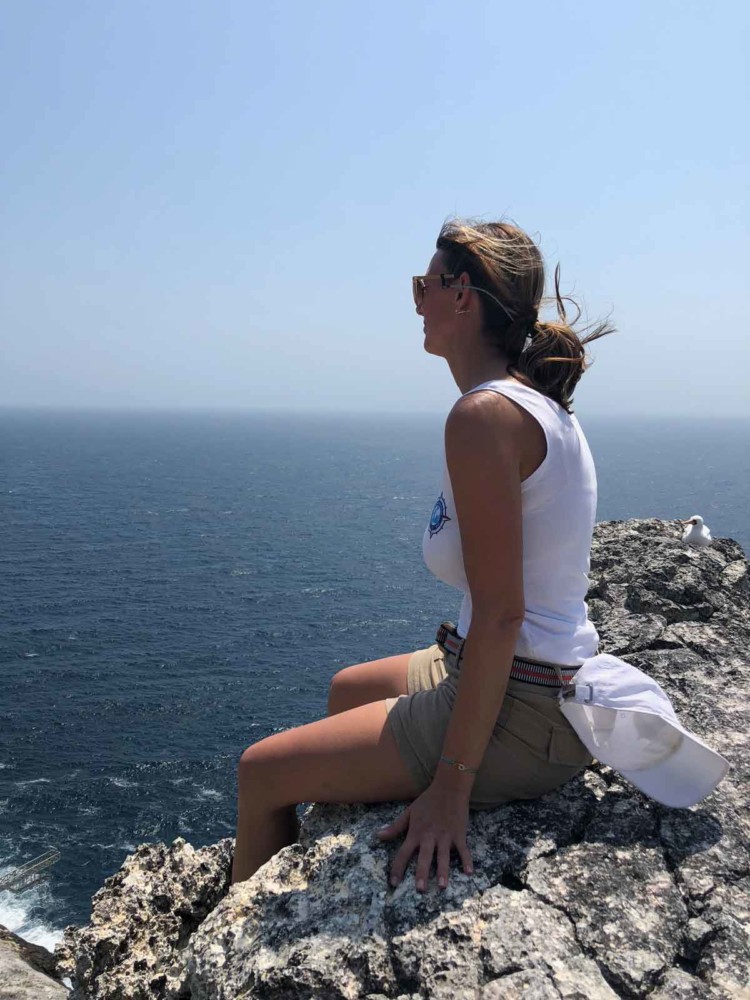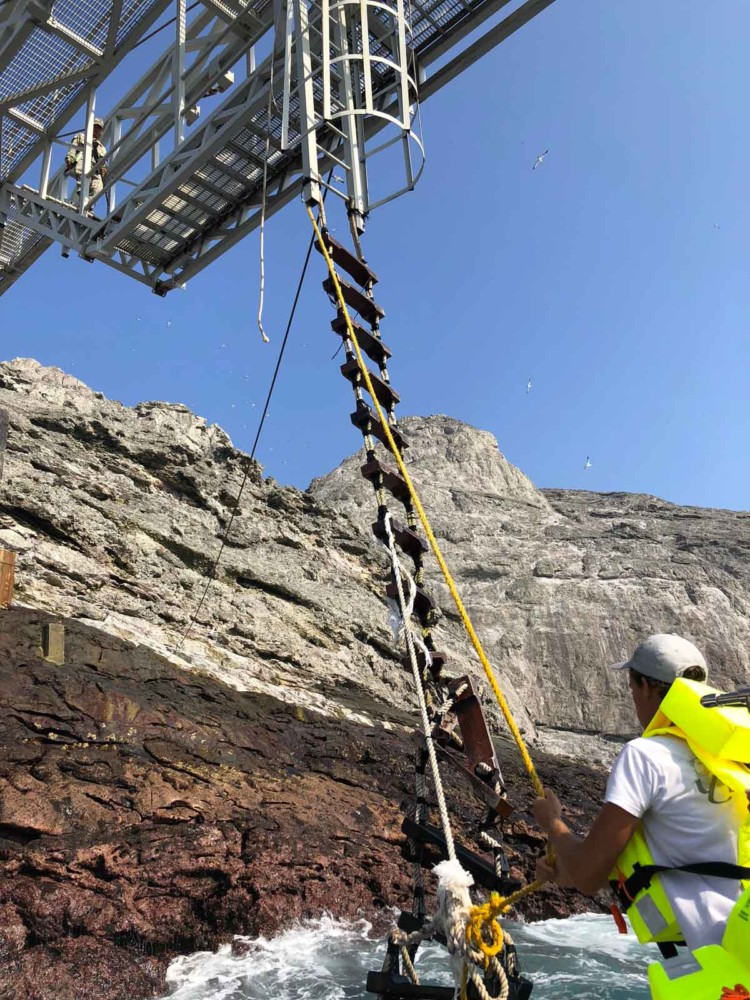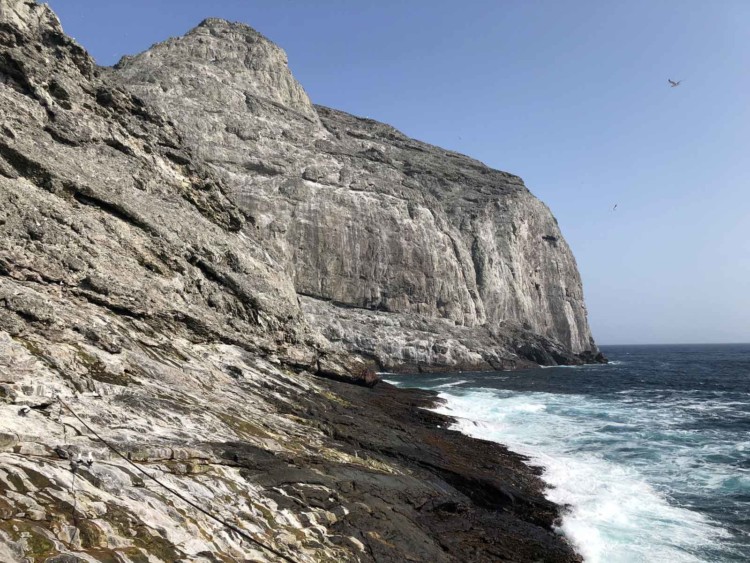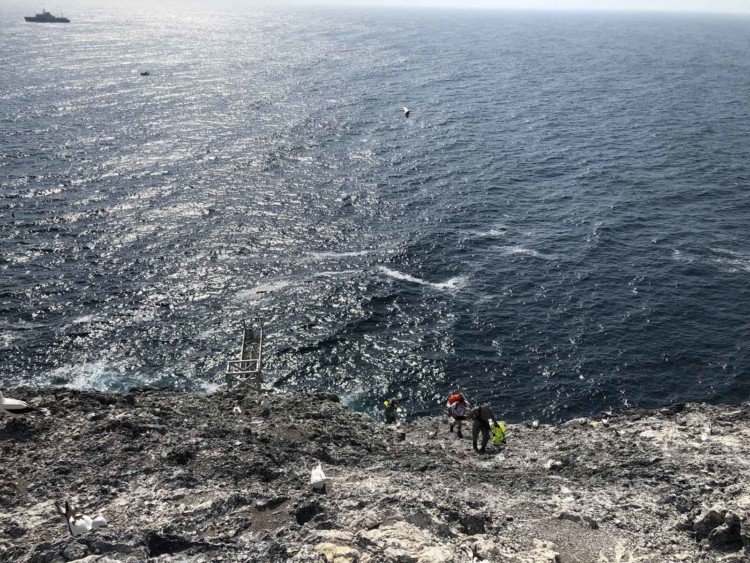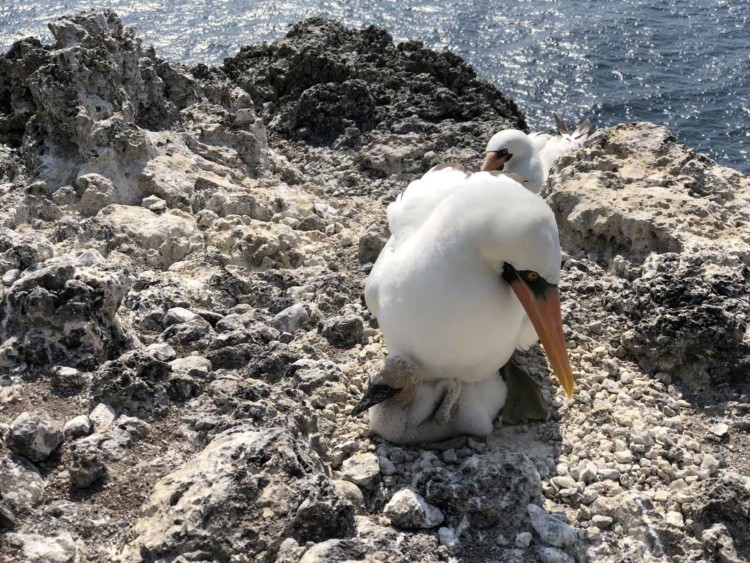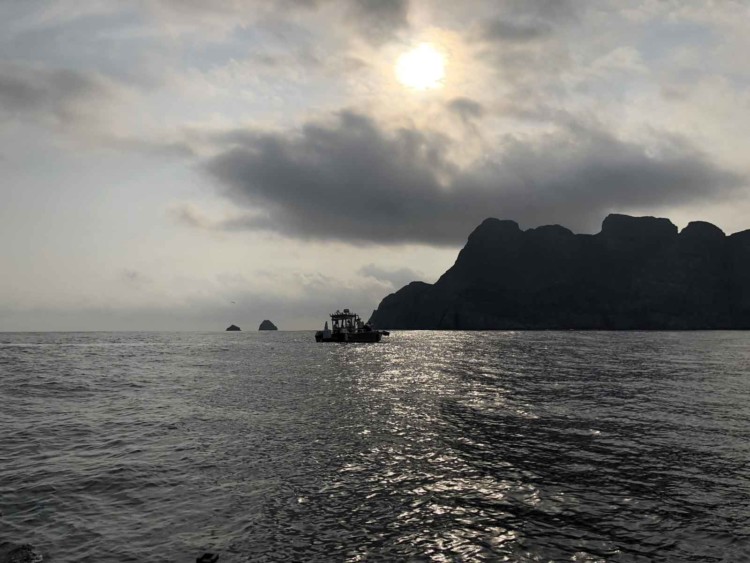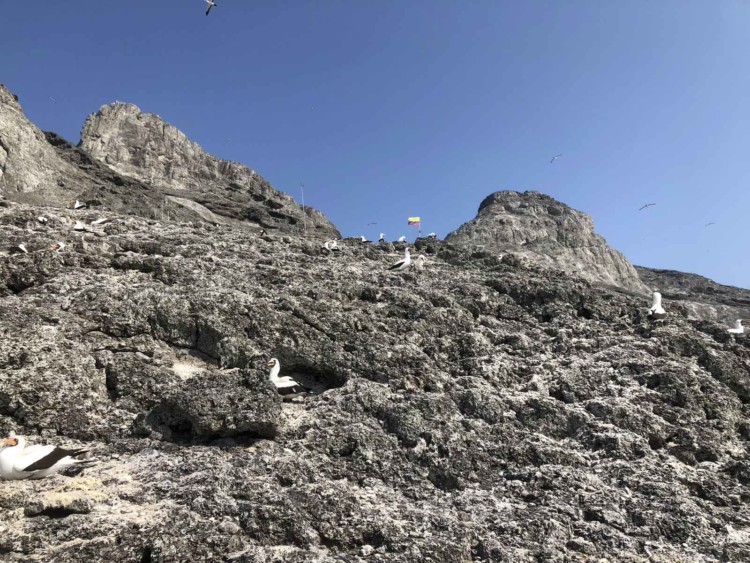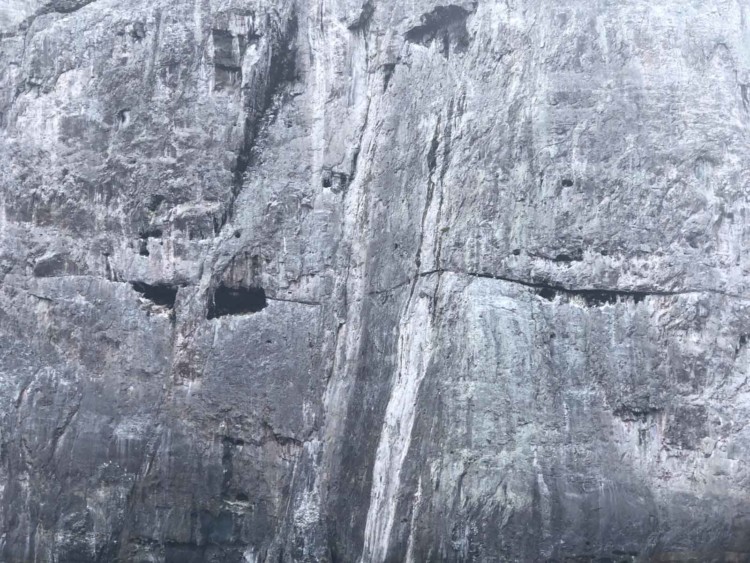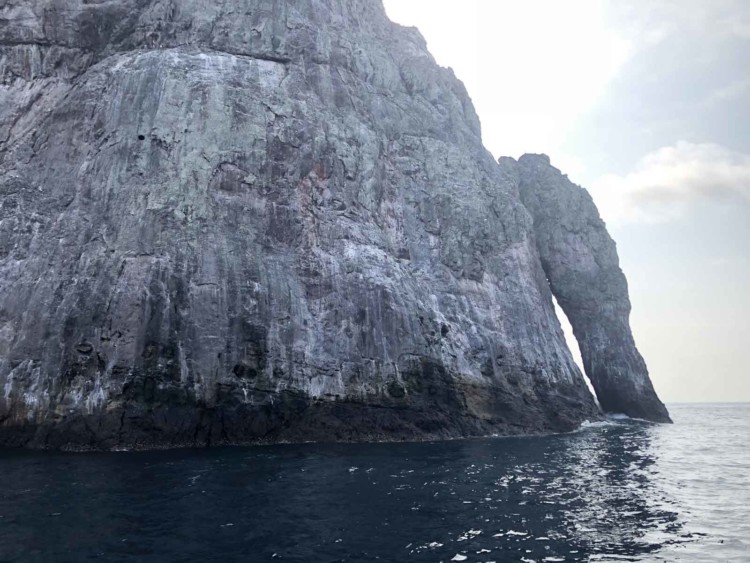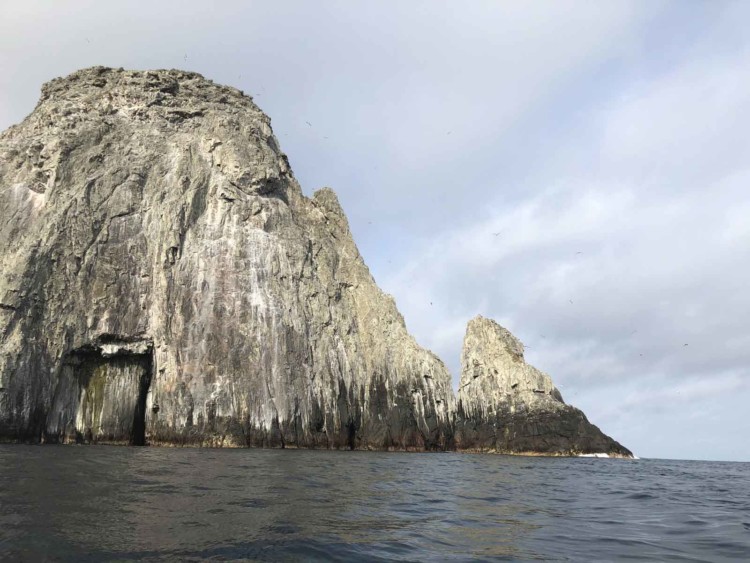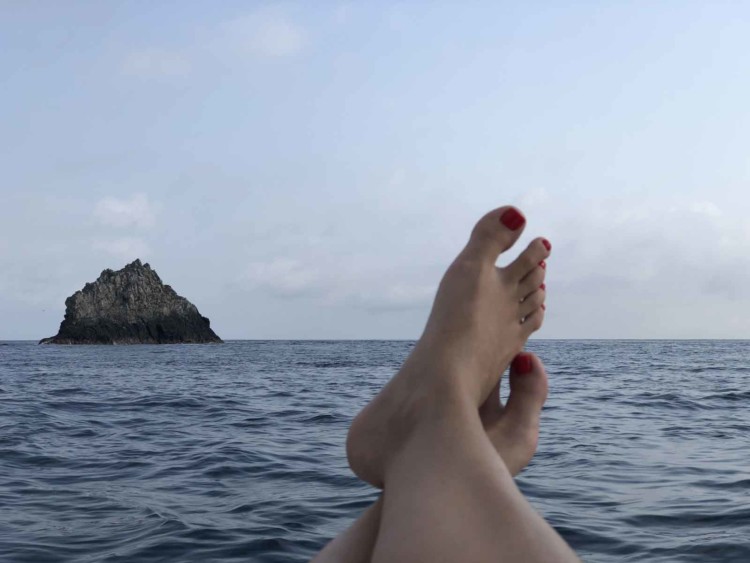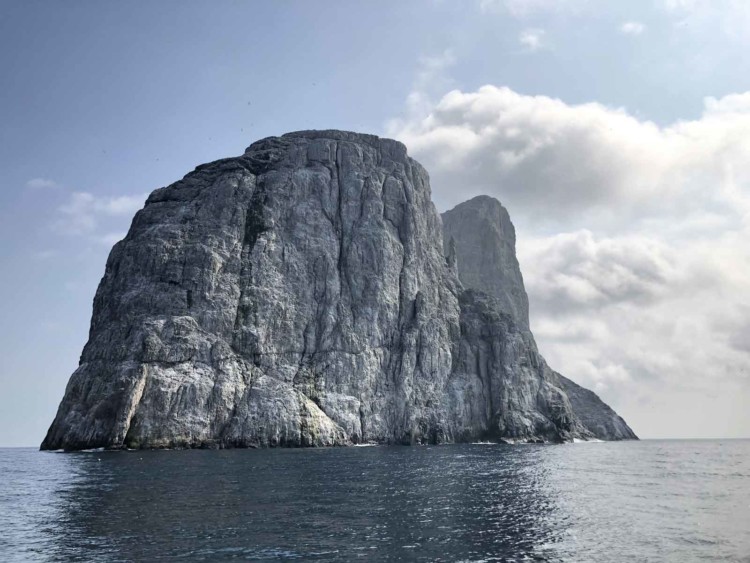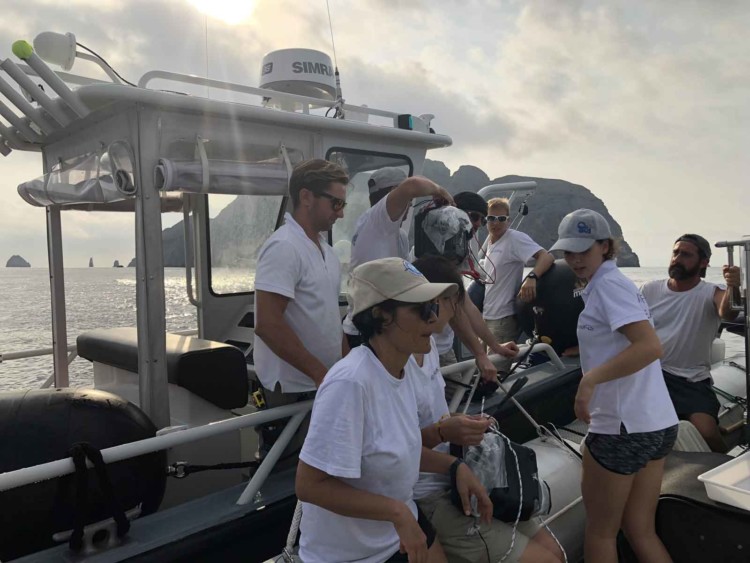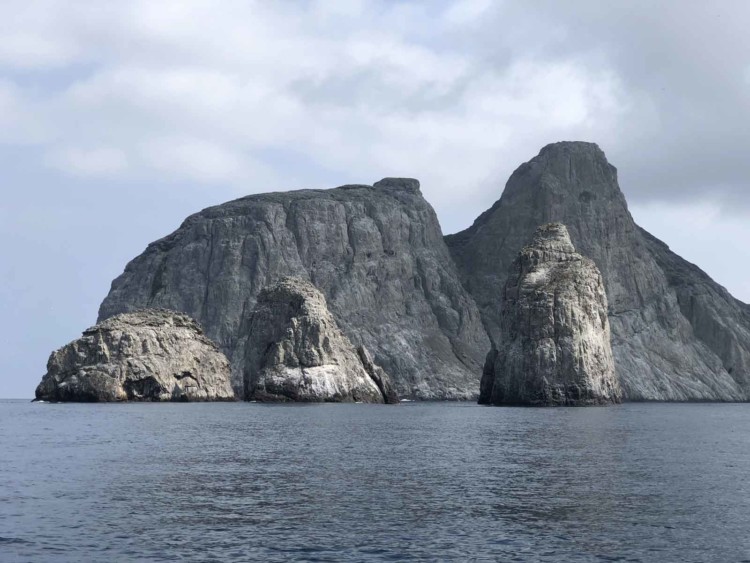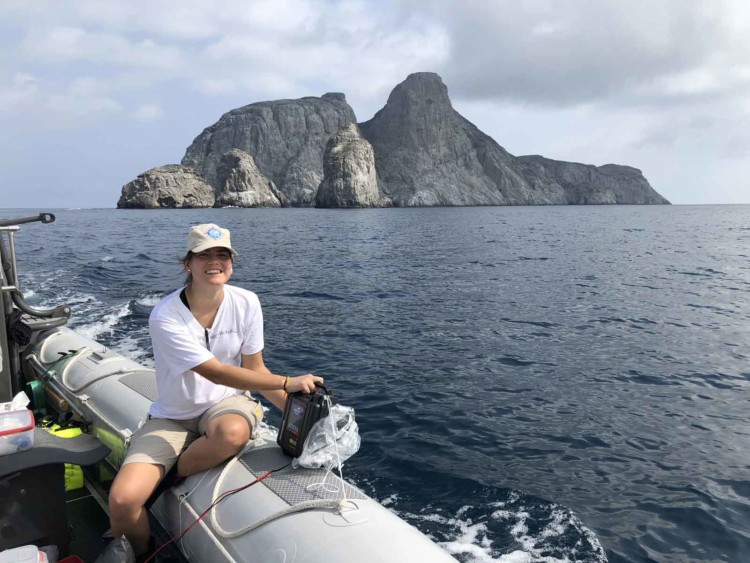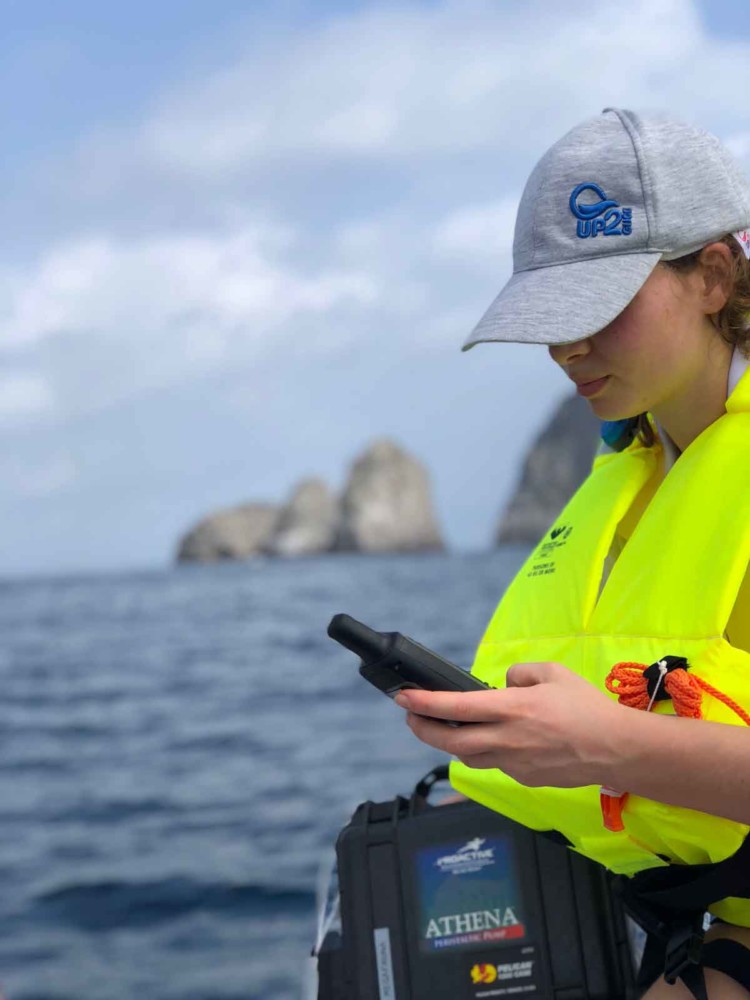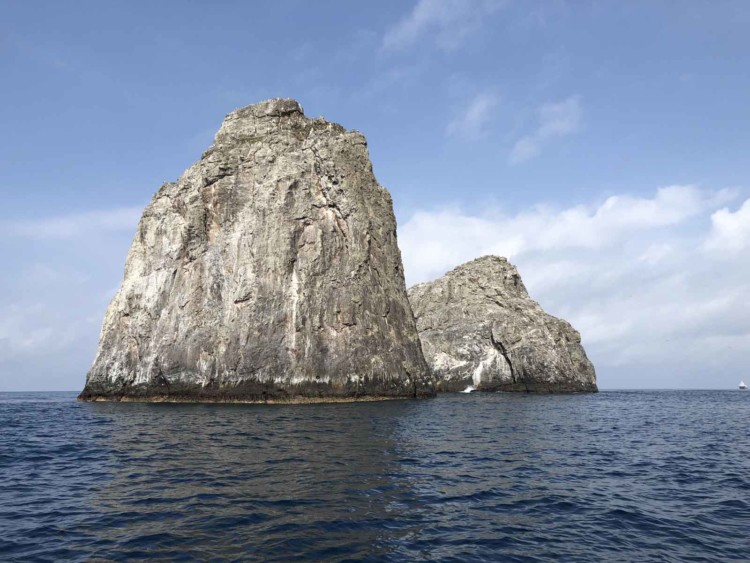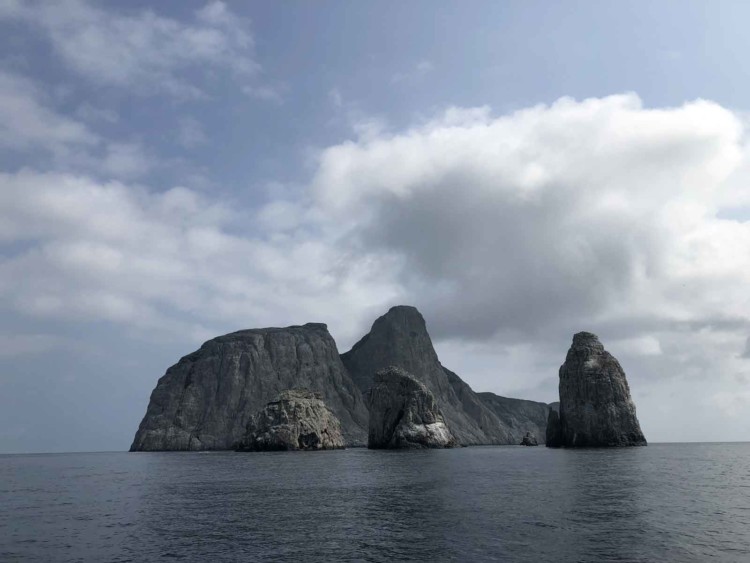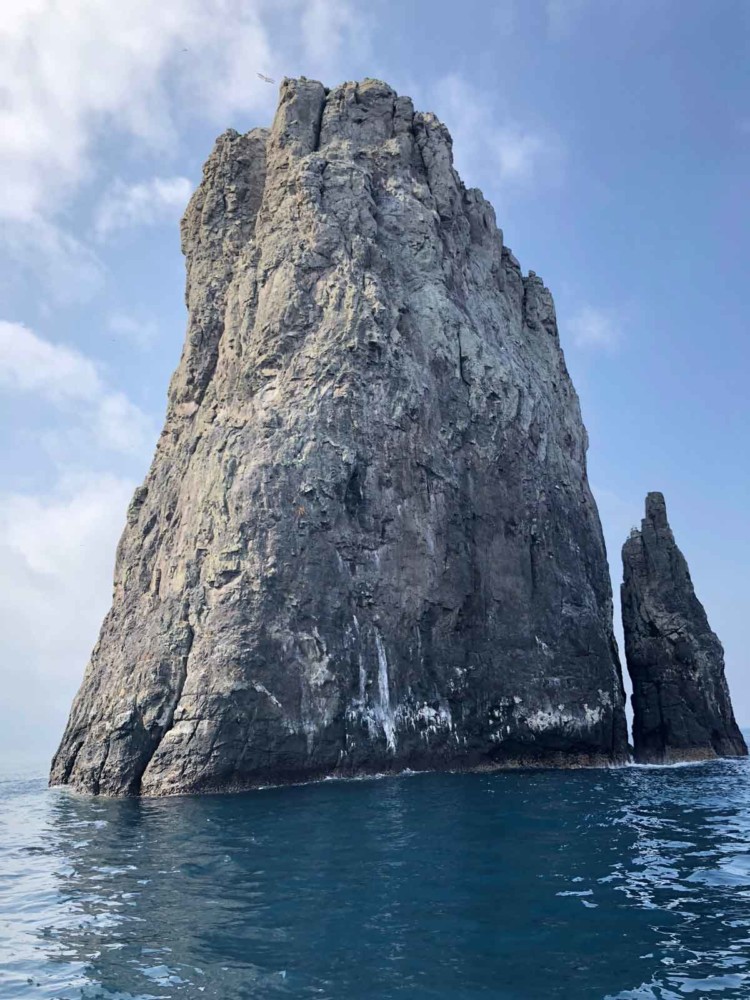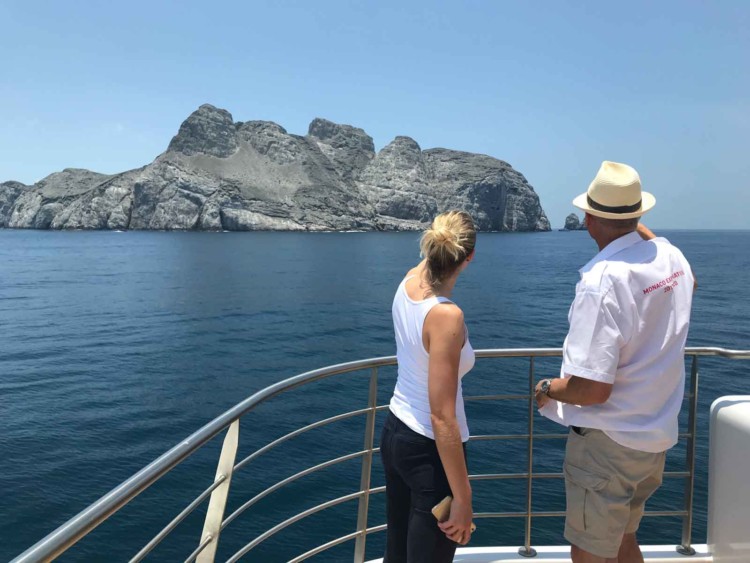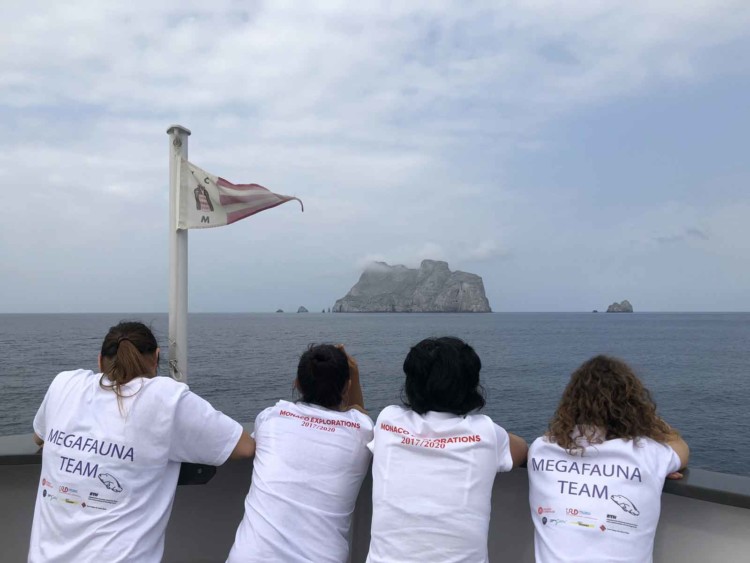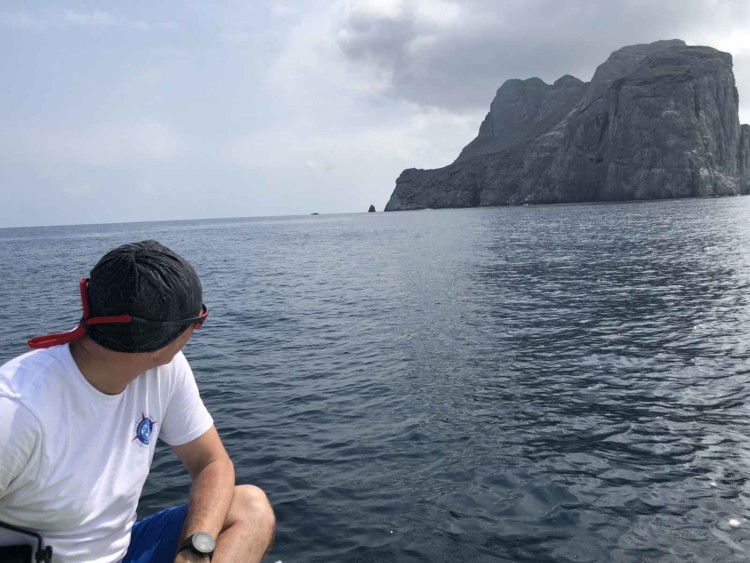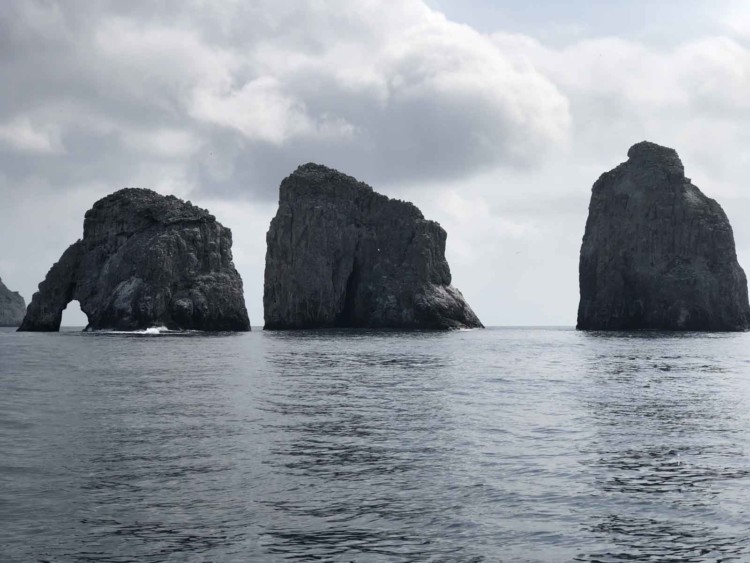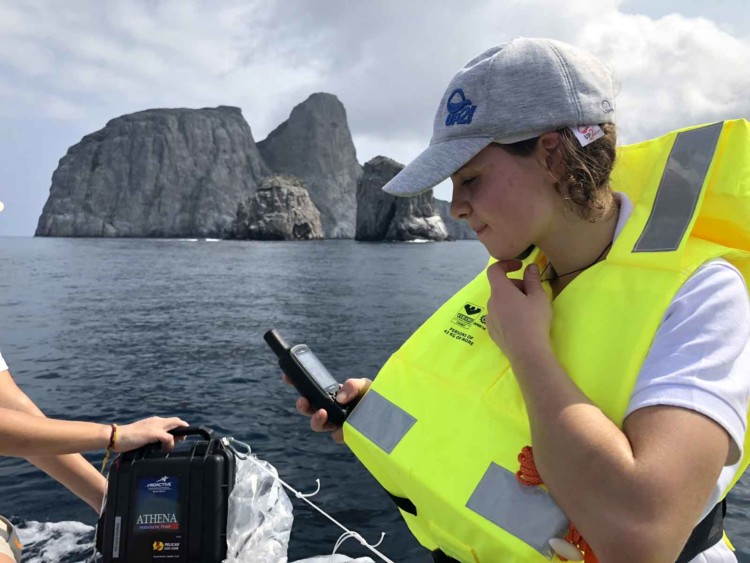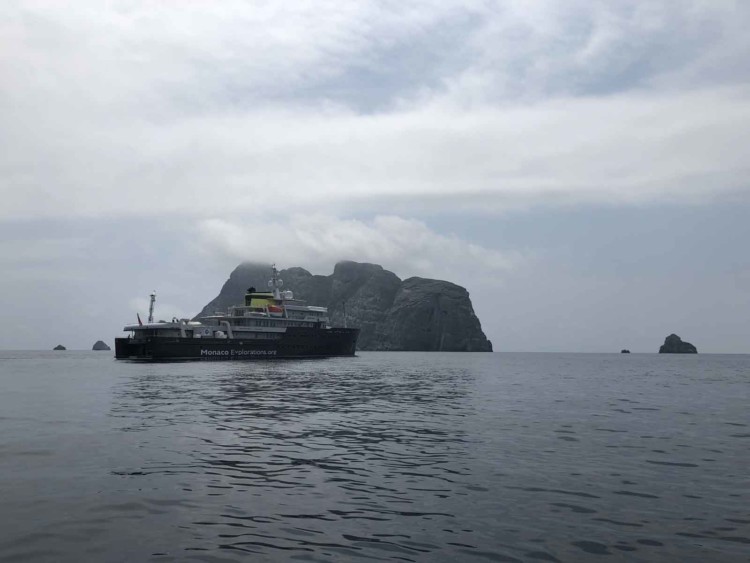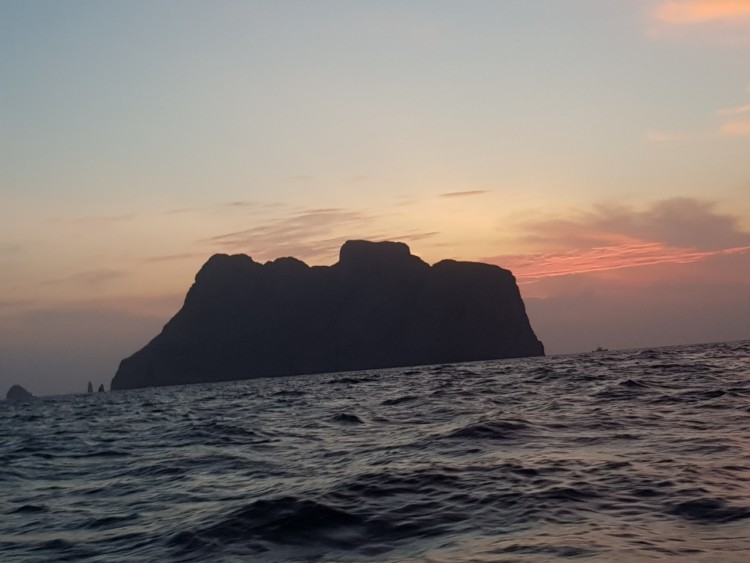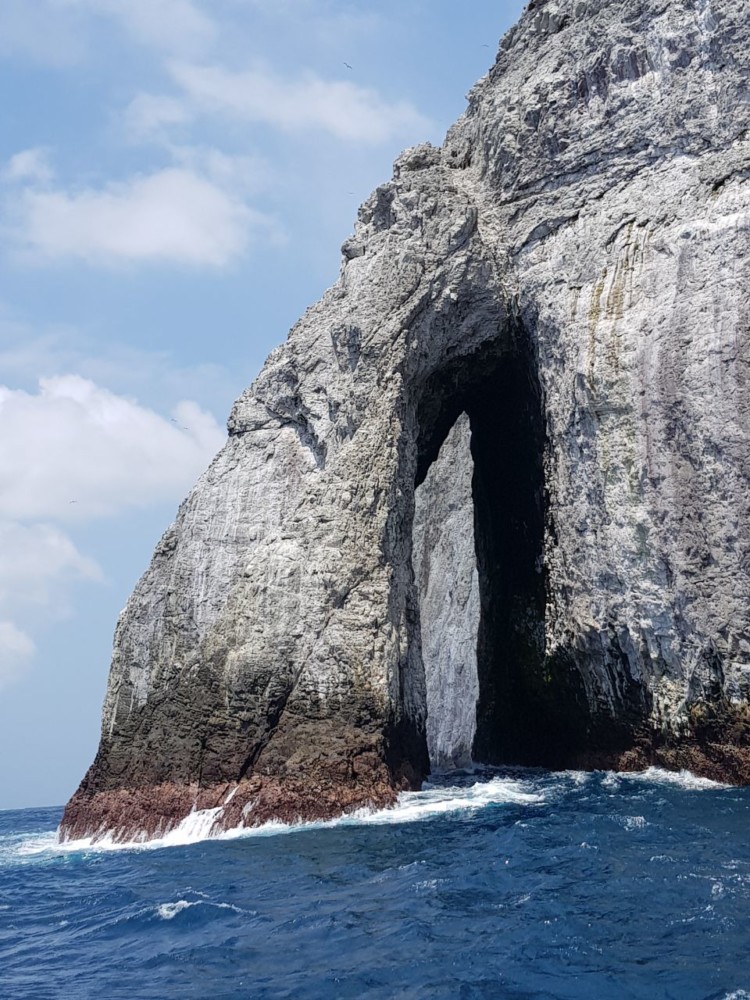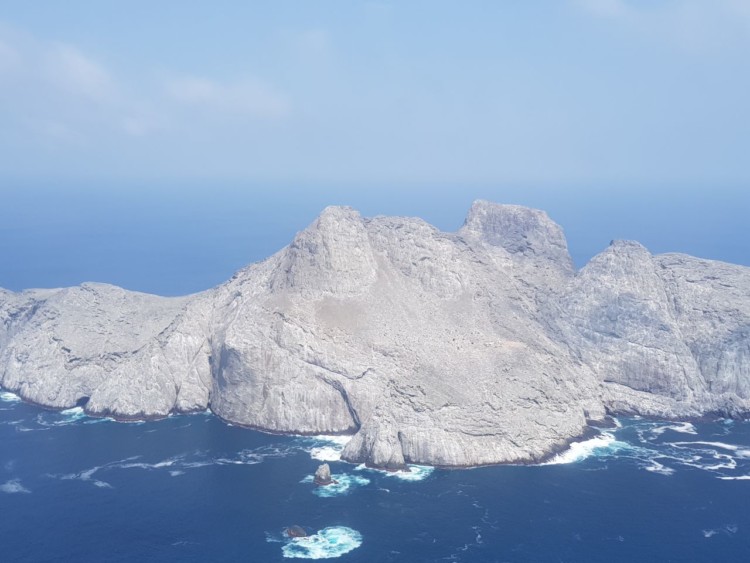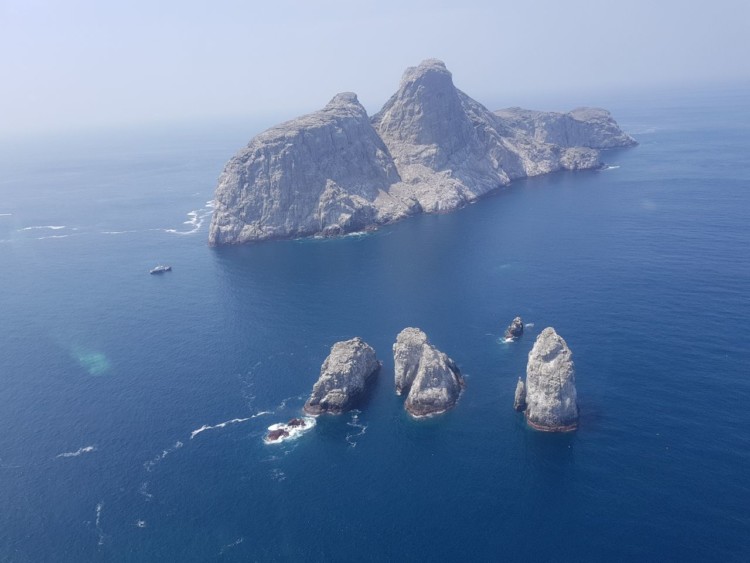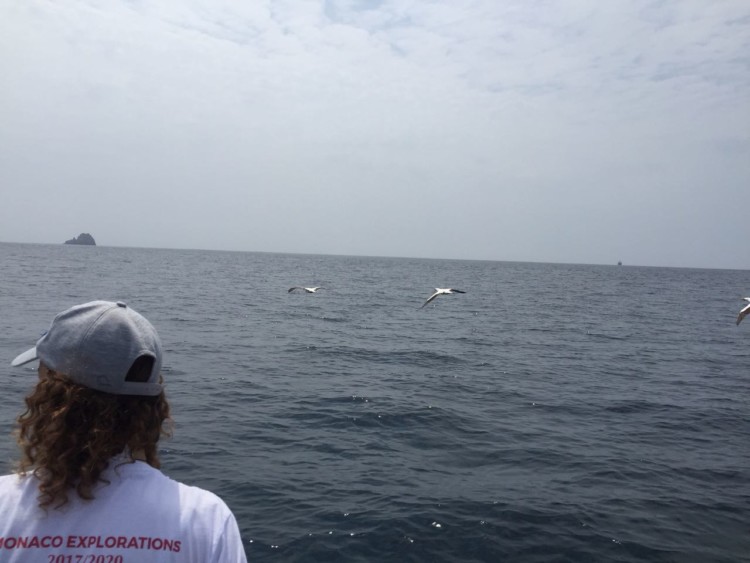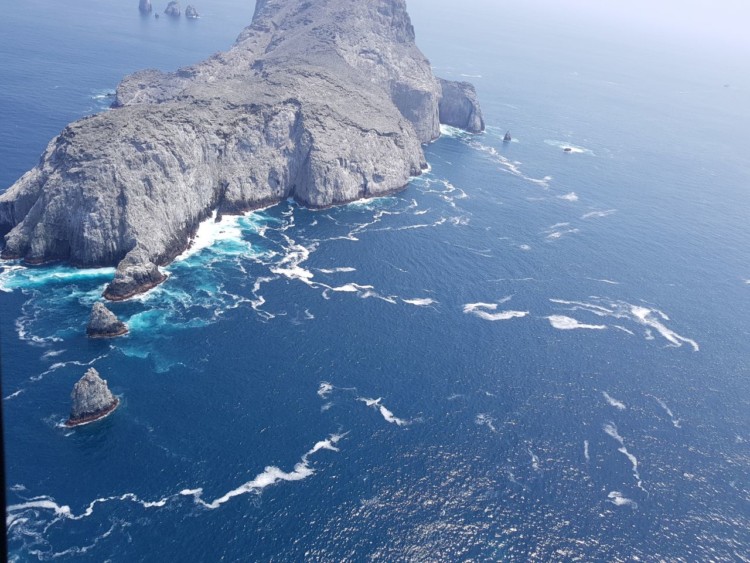After two days at the 2018 Our Ocean Conference in Bali, Indonesia, Monaco Explorations joins HSH Prince Albert II for a new mission on the small island of Badu. The island is situated in the Torres Strait, which separates Australia from Papua New Guinea. This mission’s purpose is four days immersion into the culture of the Torres Strait Islanders.
The marine environment is very much a part of the Badugal people’s ancestral traditions and is woven into the rhythm of their daily lives. Their art is also full of marine life, ocean legends and totems of marine animals. For this reason, many local Torres Strait artists participated in the 2016 Taba Naba exhibition at the Oceanographic Museum of Monaco. Among them was Alick Tipoti from Badu, who met with HSH Prince Albert II during the art exhibition. Although living in two apparently opposite societies, the artist and the Head of State share a common vision: that of a balanced and respectful relationship between man and nature. A bond was formed, and here we are two years later and 14,000km from the Principality of Monaco as the two men collaborate to address the challenges facing these island regions.

On October 31st the entire community, from the elders and guardians of island memory, to the children, have been performing dances and customary songs for days, eagerly awaiting the arrival of the Sovereign Prince.

After a reception by the local authorities, artist Alick Tipoti and HSH Prince Albert spoke privately along the island shores. The two discussed, in particular, the problems of erosion of the island coasts during the high tides (also known as “king’s tides”) and the disappearance of the corals. These remote islands are at the forefront of the effects of human activity. From plastic pollution to driftnets and global warming, these dangers, sometimes impalpable, feed the evolution of worry for the islanders.
HSH Prince Albert is the first Western Head of State to visit Badu, and Alick Tipoti and the entire island community were eager to share their worries, experiences, and future hopes with this environmental spokesperson. In doing so, there is an expectation that small island communities such as theirs will be considered equitably during global climate negotiations.

While snorkeling with hopes of encountering some marine turtles and dugongs, the effects of global warming, and consequently multiple bleaching episodes, on the Torres Strait coral reefs were evident. The most severe bleaching episodes have apparently occurred in Australia, suggesting that a majority of corals have died in parts of the Great Barrier Reef. HSH Prince Albert was able to testify to what he witnessed here only a few days later during his meeting with the teams of the Australian Institute of Marine Science and the Great Barrier Marine Park Authority.

To be able to speak with the highest of authority on marine matters, to the most influential decision makers around the world, it is essential to see first-hand and understand island territories such as Badu, which are the places most exposed to the climate change. To meet Monaco Exploration’s goal of reconciling humanity with the sea, we must first understand and experience the relationship that drives this interaction.
Thus, any knowledge and experience that the “elders” will share is crucial. We have asked them: What relationship do you have with nature? How do you use resources? What impact does climate change have on your society? How is your way of life influenced by the Western world?

We have much to learn from island communities and their relationship to the sea. Far from our anthropocentric vision – which places man at the center of the world – these first peoples embrace a holistic vision of nature: plants, animals and men all part of a whole, a global sphere. Although widespread for millennia, this approach is showing its first signs of weakening at an alarming pace under the influence of the dominant Western way of life.
HSH Prince Albert was particularly sensitive to the concerns of these populations in the face of threats posed by globalization, not only to the physical environment but also to their societal future. The erosion of the coast of Badu, combined with the erosion of their ancestral culture, makes them fear the disappearance of their home and their way of life, language and heritage.
The balance that these first human societies maintain with nature appears more than fragile. On one hand, there is the need to evolve and the desire to develop. On the other, a cultural identity rooted in a sacred relationship to the natural world. And so, we realize that this small, insular community of only 200 to 300 souls is at a crossroads.

We hope that the Badulgal people will discover a path, one that demonstrates that economic development and the maintenance of tradition are not only enemies, but can be complementary, necessary, and profitable to communities such as theirs. This path could be that of the circular economy, to preserve our ecosystem and break from the linear economy widely adopted by Western societies (produce, consume, discard).
The interdependence of the Badulgal people and their environment (nature provides for their needs and they strive to maintain it in return), their way of exploiting resources, their knowledge of and interactions with the marine world are all examples for our modern societies, as well as for the message delivered by HSH Prince Albert II to his peers.
HSH Prince Albert II of Monaco took part in an aquatic hike in the beautiful grounds surrounding the island of Badu.
Hoping for a few encounters with marine turtles and Dugongs, the Sovereign has instead seen the effects of global warming on Torres Strait coral reefs, which have suffered from severe and repeated bleaching episodes in recent years. A degradation that he will be able to testify to this week at the International Coral Reef Initiative (ICRI) conferences in Townsville, Australia, where Monaco is co-chairing this year.
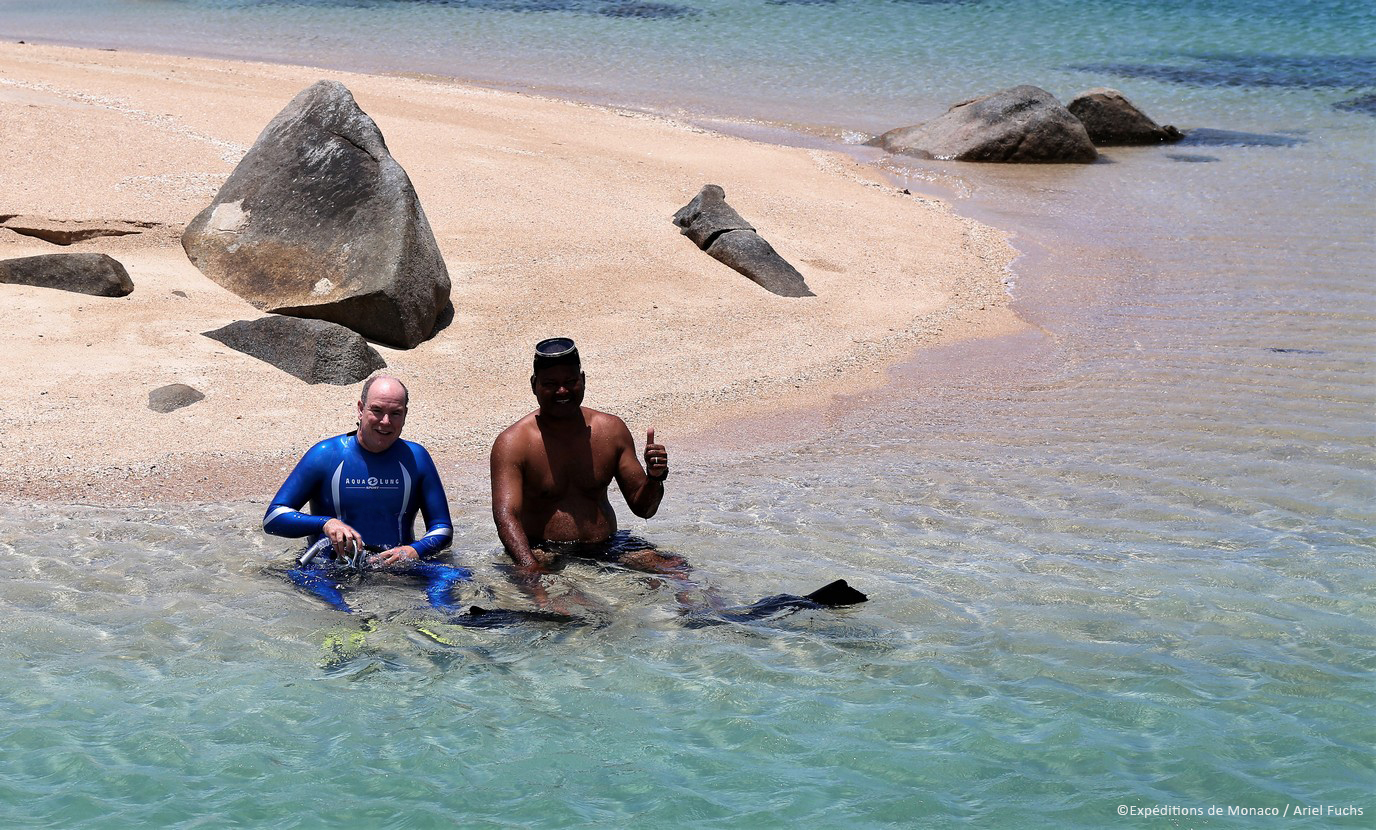
Our mission in Malpelo has come to an end. As we sailed away tonight toward Panama we were lucky to have a beautiful send off from mother nature.
[vc_row][vc_column][vc_column_text]
[/vc_column_text][/vc_column][/vc_row][vc_row][vc_column][vc_column_text][KGVID poster=”https://www.monacoexplorations.org/wp-content/uploads/2018/04/36_hours_hero.jpg”]https://www.monacoexplorations.org/videos/36hours.mp4[/KGVID][/vc_column_text][/vc_column][/vc_row]
[vc_row][vc_column][vc_column_text]Look who came to visit the baited cameras!
[/vc_column_text][/vc_column][/vc_row][vc_row][vc_column][vc_column_text][KGVID poster=”https://www.monacoexplorations.org/wp-content/uploads/2018/04/baited_camera_hero.jpg”]https://www.monacoexplorations.org/videos/baitedcamera.mp4[/KGVID][/vc_column_text][/vc_column][/vc_row]
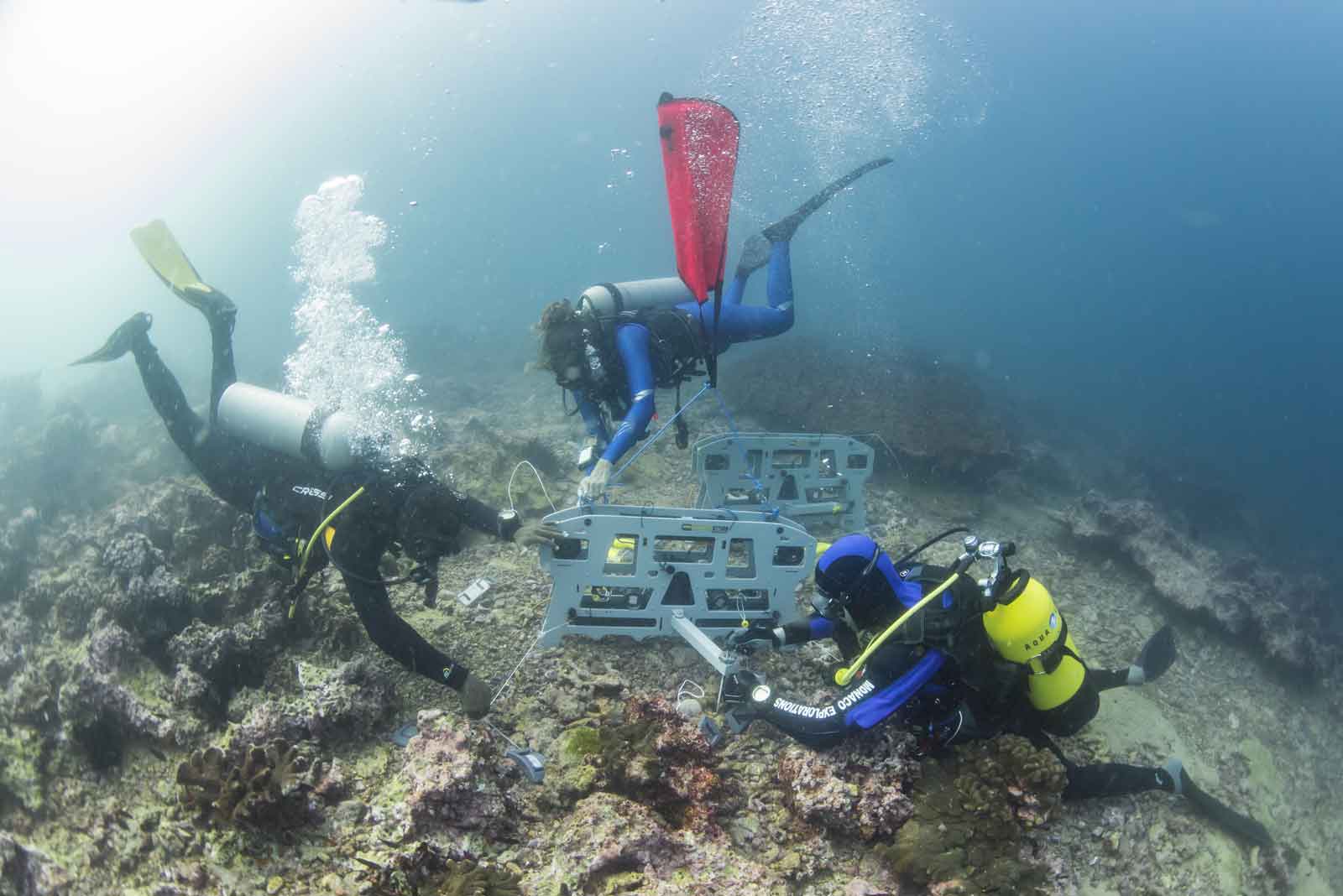
The team from MARbec (Marine Biodiversity, Exploitation and Conservation) is here to set their camera rig on the sea floor between 10-20 meters for 36 hours at a time. The footage from these cameras will allow them to identify species that exist in both daytime and nighttime environments (the lights from their camera rig attract many species in the night), and to cross reference the footage with the results they get from filtering for EDNA.
The camera rig itself weight 12kg and the team stabilizes it with 20kg of additional weight. The team has 2 cameras that record for 12 hours each. After setting the camera, they must return every 12 hours to switch it out with the other one, which has been charged. The final task is reviewing the footage carefully and noting each finding – a long task for sure, but quite exciting when they find footage they were hoping for.
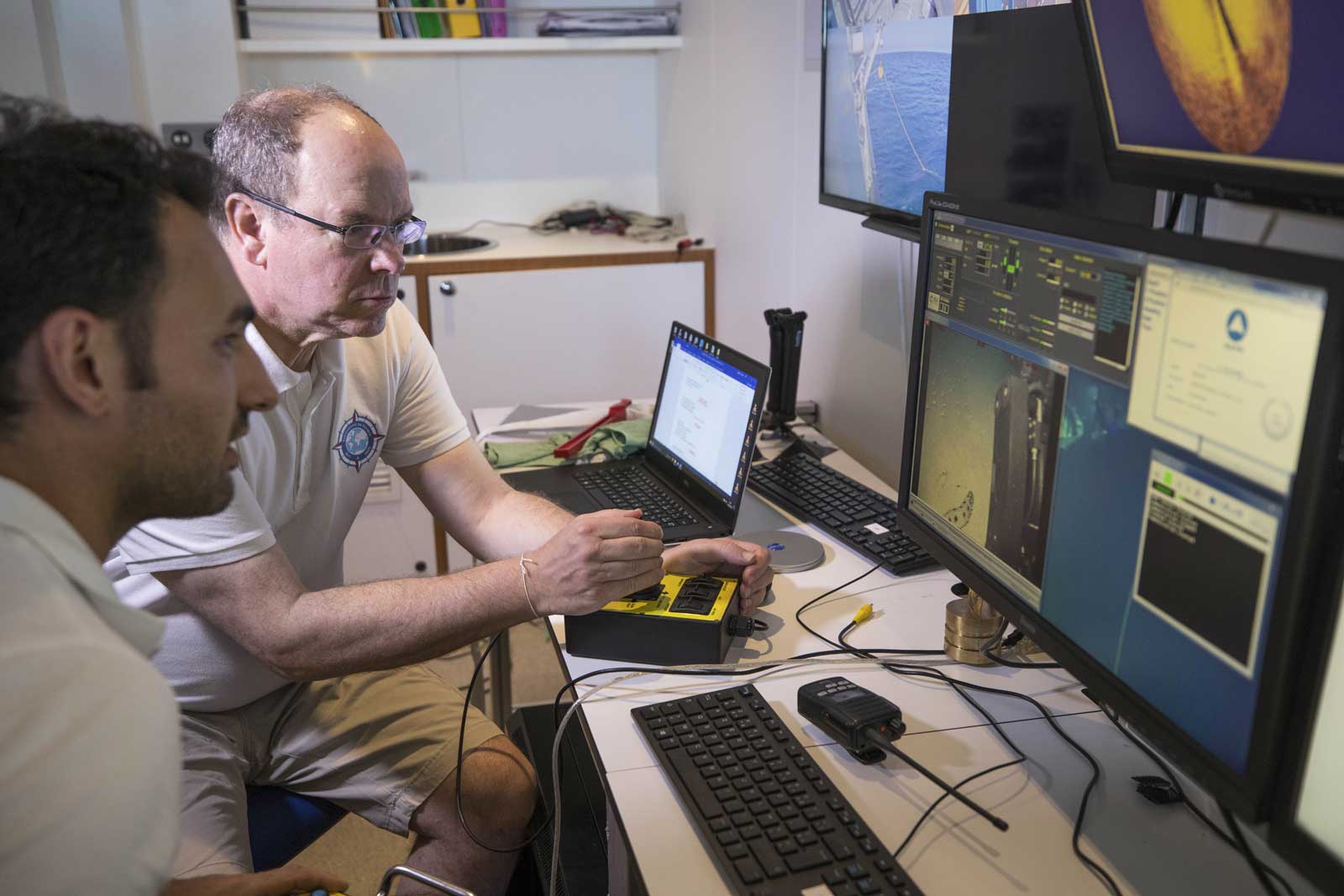
See the video here.

Left to Right: Jean Baptiste Juhel, Pierre Cordier, Giomar Borrero, X, Loïc Pellissier, Captain Mario Rubianogroot, Caludia Restrepo Ortiz, Thierry Apparu, Raymond Clerc, Liz Factor, Régis Hocdé, Florine Hadjadj, and Andrea Polanco.Today we said goodbye to the scientists from the Megafauna Consortium and welcomed their colleagues from MARbec and Zoological Society of London on board for a “part two” of this mission. We also said goodbye to Raymond Clerc, our Chief of Mission, and welcomed Léa Lippisch who will take over the role for this part of the mission.
Welcome Tom Letessier, Virginie Marques, Nicolas Loiseau, and Laure Velez!!

Malpelo is a beautiful place and every one of us feels honored to be here. Today I’m sharing a set of 80 photos, all of which include the island. As the English idiom goes; a picture is worth a thousand words.
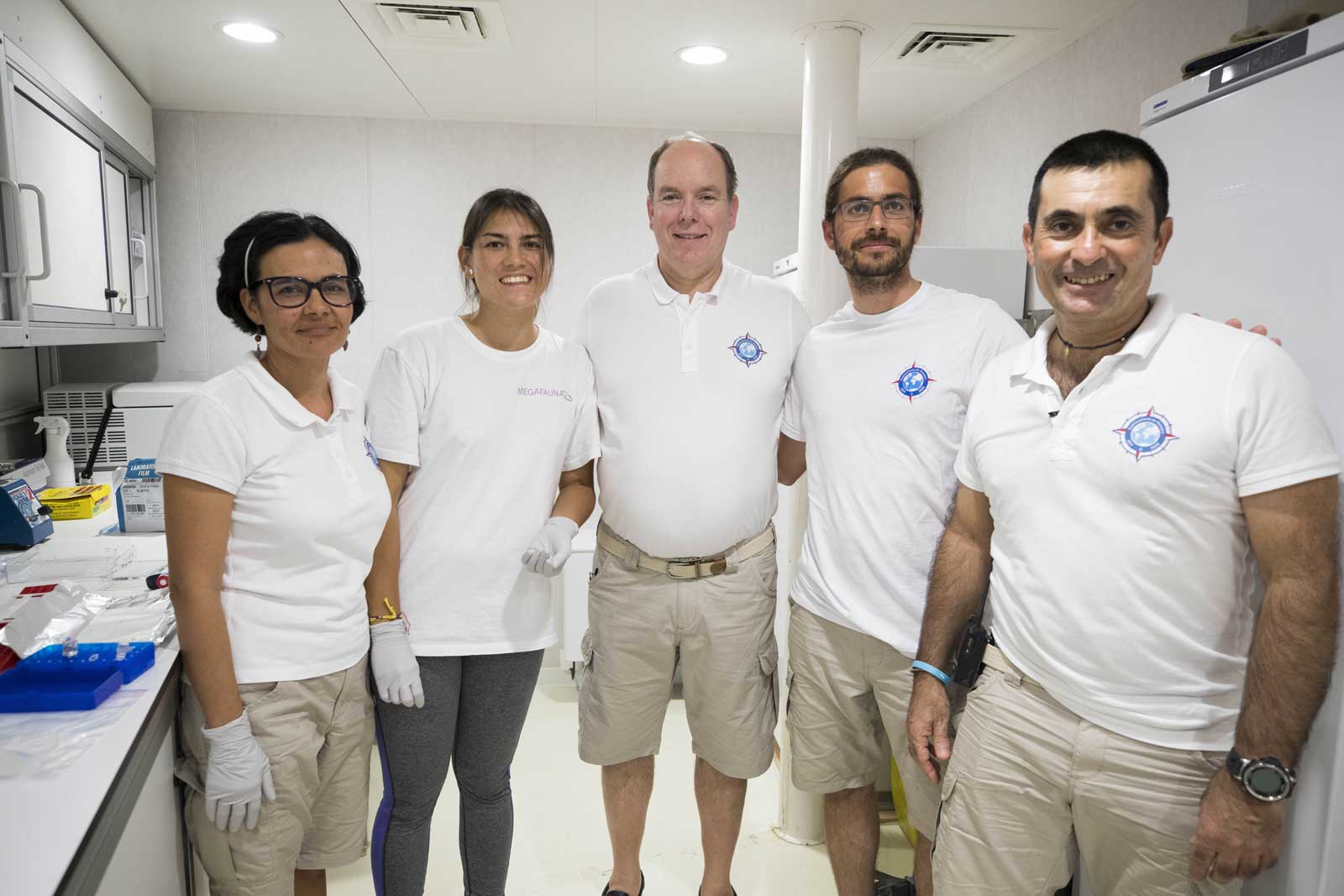
Environmental DNA (eDNA) is genetic material originating from organisms. This material can be filtered from water samples. It comes from feces, mucus, blood, and sloughed cells, tissue, and in some cases can be attached to particles. The Megafauna team issampling from locations near Malpelo’s coast and reefs.
In labs, the eDNA is extracted, amplified and sequenced. These sequences are analyzed to identify species present in the sampled seawater. It also helps to build a reference database to accurately identify species.
